We were to visit two places in present-day Madhya Pradesh that owed their popularity to the centuries gone by, when two women made them famous. So, under overcast skies and with a cool breeze blowing even at 2 PM, we set off for the first of these places — Maheshwar. Does the name ring a bell? Perhaps a temple for Lord Maheshwara or a place for the renowned Maheshwari sarees? Partly true, but Maheshwar is steeped in history and legend. Reached our hotel on the main road and the reception boasted pictures of many of the film stars who had stayed there while shooting in Maheshwar. It was raining quite heavily now, so we decided to have a short nap and see if the weather would improve.
4.30 PM and the drizzle was persisting. Had a cup of tea and decided to step out to fulfil the purpose of our visit — to see first-hand and admire the work of a famous daughter of this area — Ahilyabai of Holkar.
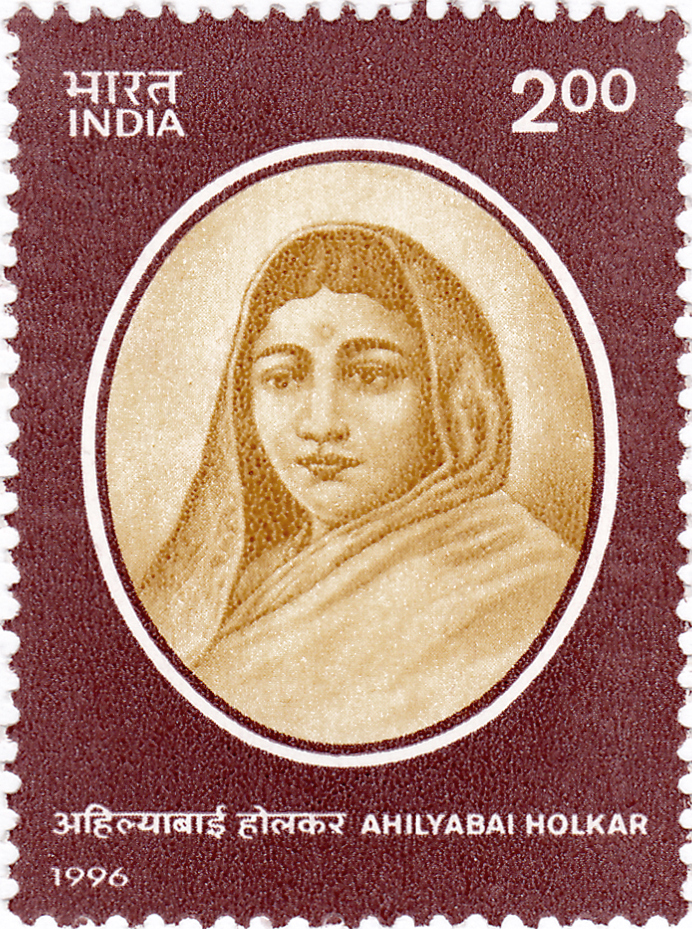
Hailing from Maharashtra, Ahilyabai was married off at the age of 8 to the son of Malhar Rao Holkar, a commander in Peshwa Baji Rao’s army. She showed great intelligence and a pious, spiritual streak even when young. She accompanied her husband on various campaigns but when her husband was killed in war, she wanted to commit sati. It was her father-in-law who stopped her, trained her in warfare and administration. So much so that after her father-in-law’s death, Ahilyabai’s son became the ruler of Indore under her guidance but died a few months later. Ahilyabai, despite the personal tragedies plaguing her life, took over as the Ruler of Indore, the Holkar dynasty. What a rule it was! Apart from successful military campaigns, her emphasis was on development and well-being of her people. Being a religious person, she spent a lot on building and restoring many temples all across India. Jawaharlal Nehru in his book ‘ Discovery of India’ describes Ahilyabai as — “She was a very able ruler and organizer, highly respected during her lifetime, and considered as a saint by a grateful people after her death.”
Ahilyabai had made Maheshwar her seat of power or capital and that is what we had come to see. The car wound through some narrow roads before the driver pointed to a mud path leading from the side upwards towards Maheshwar Fort. His advice — Walk up, explore the insides of the fort, climb down the steps on to the Narmada Ghats, walk across, see the Rajarajeshwar & Kashi Viswanath Temples up the slope and you will reach the place where I will be waiting for you.
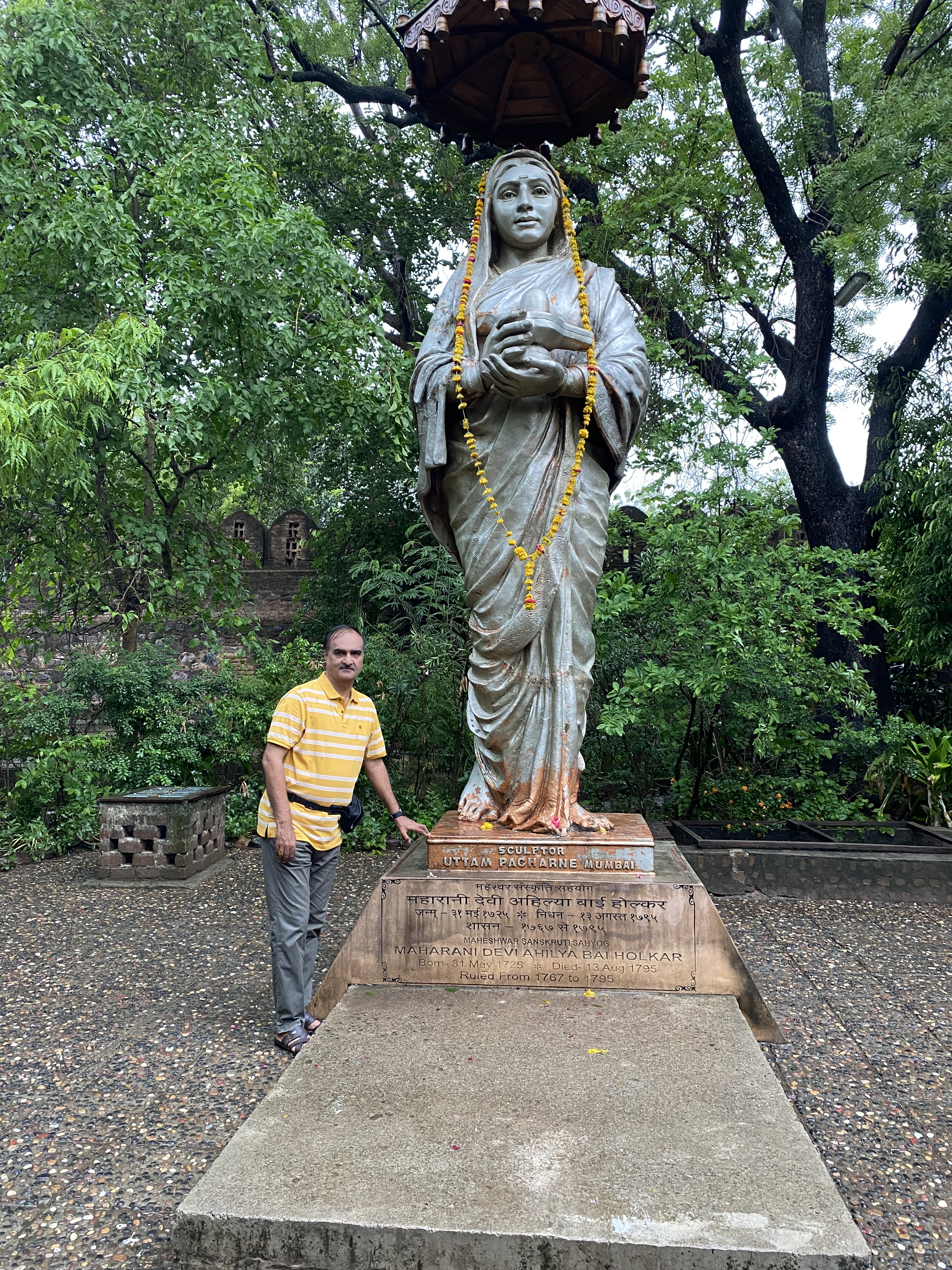
Entering the fort after a brief walk uphill, in the shaded garden, we see a statue of the grand lady herself in her classic pose of holding a mud shivling in her hands. It is said she used to make mud shivlings daily, pray to them and then immerse them in the Narmada. We entered the Rajwada now (photography here is strictly prohibited and there are guards all round), where we could see the place from where Ahilyabai sat and administered, a few of her personal belongings and the temple where she prayed. Moving along to the large prayer room, we could see a swing made of gold (sone ka jhoola)in which the moorthis of Gods were placed and swung gently. Moving out, we entered another temple where the priest explained the presence of an ancient tree and how poojas are performed here even now.
Walking a few steps, we were awestruck at the first view of the structures in the courtyard below and the Narmada in the background. The Maratha architecture looked grand, as did the Rajwada but there was nothing ostentatious about it. The beauty lies in its simplicity.
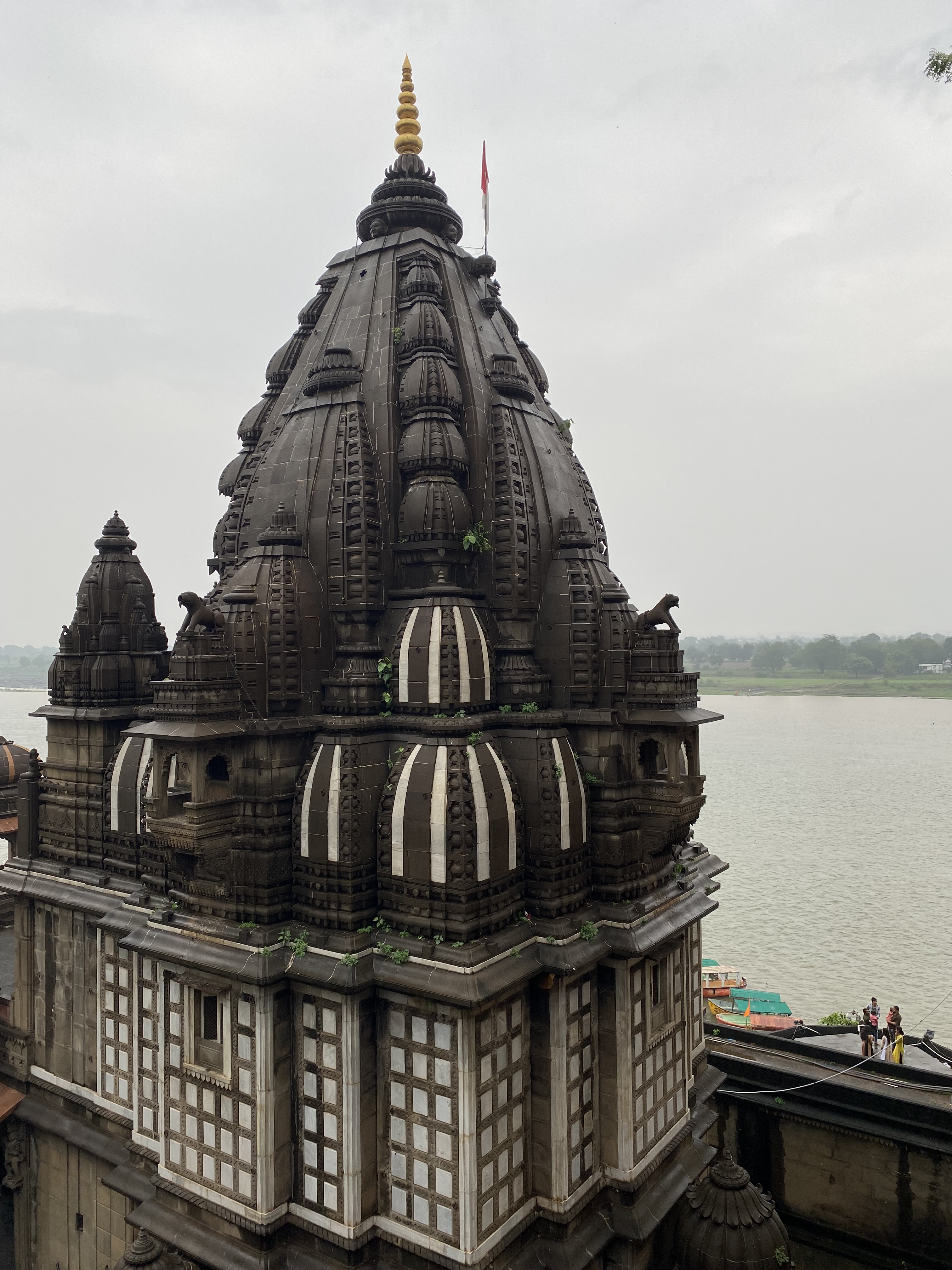
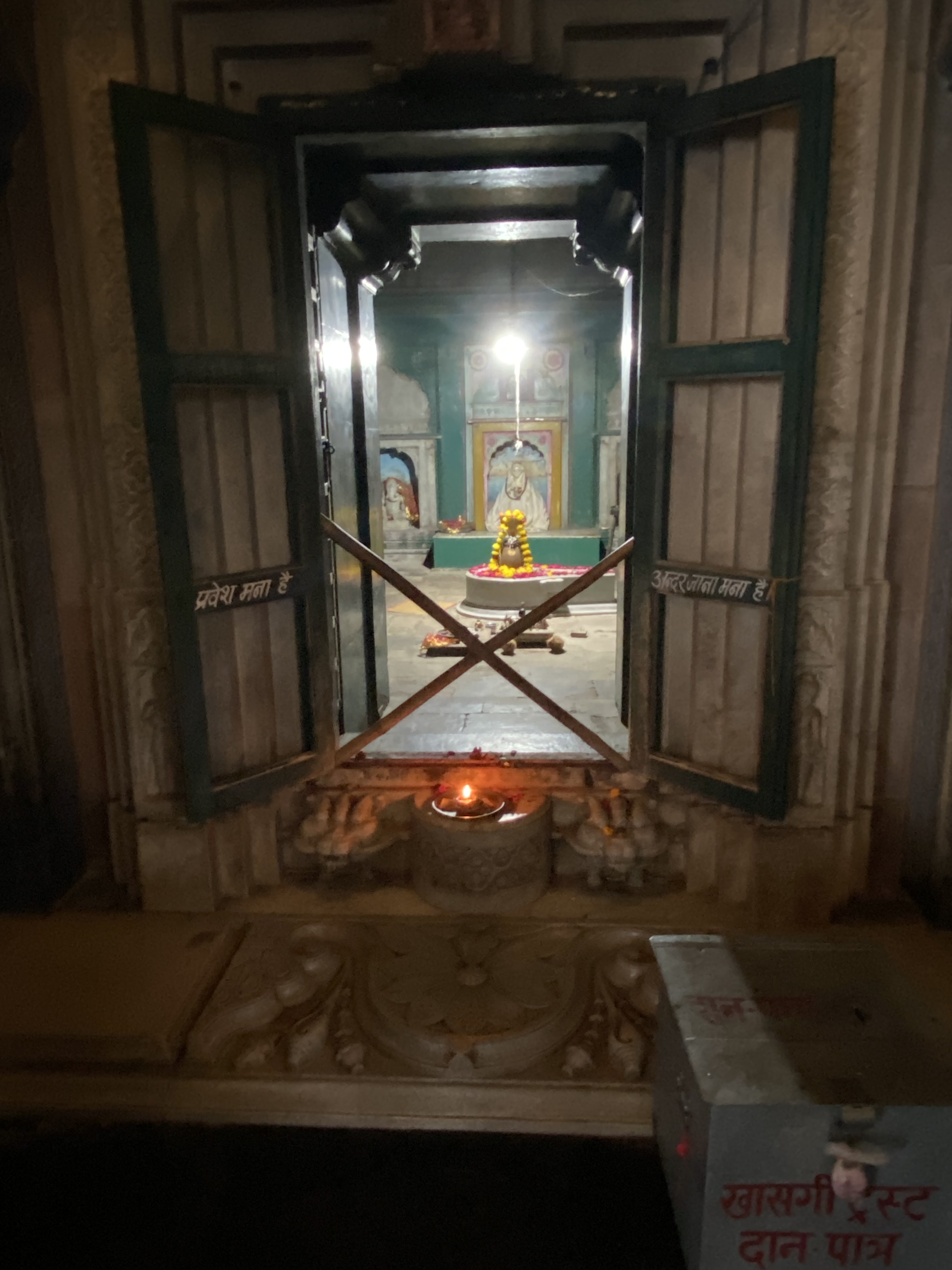

An elaborate corridor with beautifully carved doors and windows …. it hit me suddenly, this is where the song ‘Snegidane snegidane..’ from Maniratnam’s Tamil film ‘Alai Payuthe’ was shot. Fancied myself as Madhavan for a while.
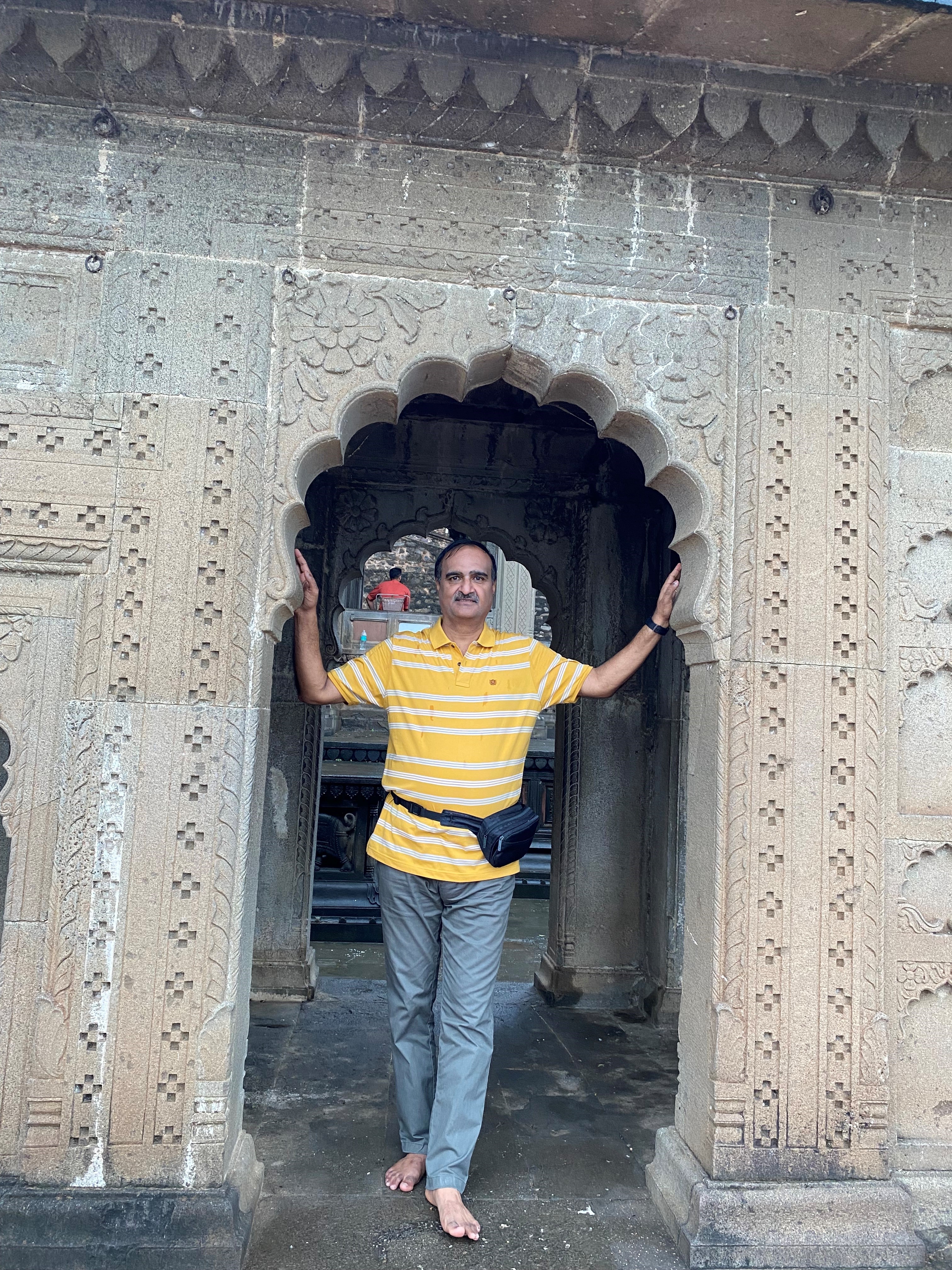
Now, we stepped down into the courtyard to admire the Vithoji chatri. The Narmada was in full view and on the ghats there were numerous visitors out for a stroll, children driving battery-operated cars, balloon-sellers, etc…. it presented the sight of a fair, even in the midst of a light to heavy drizzle.
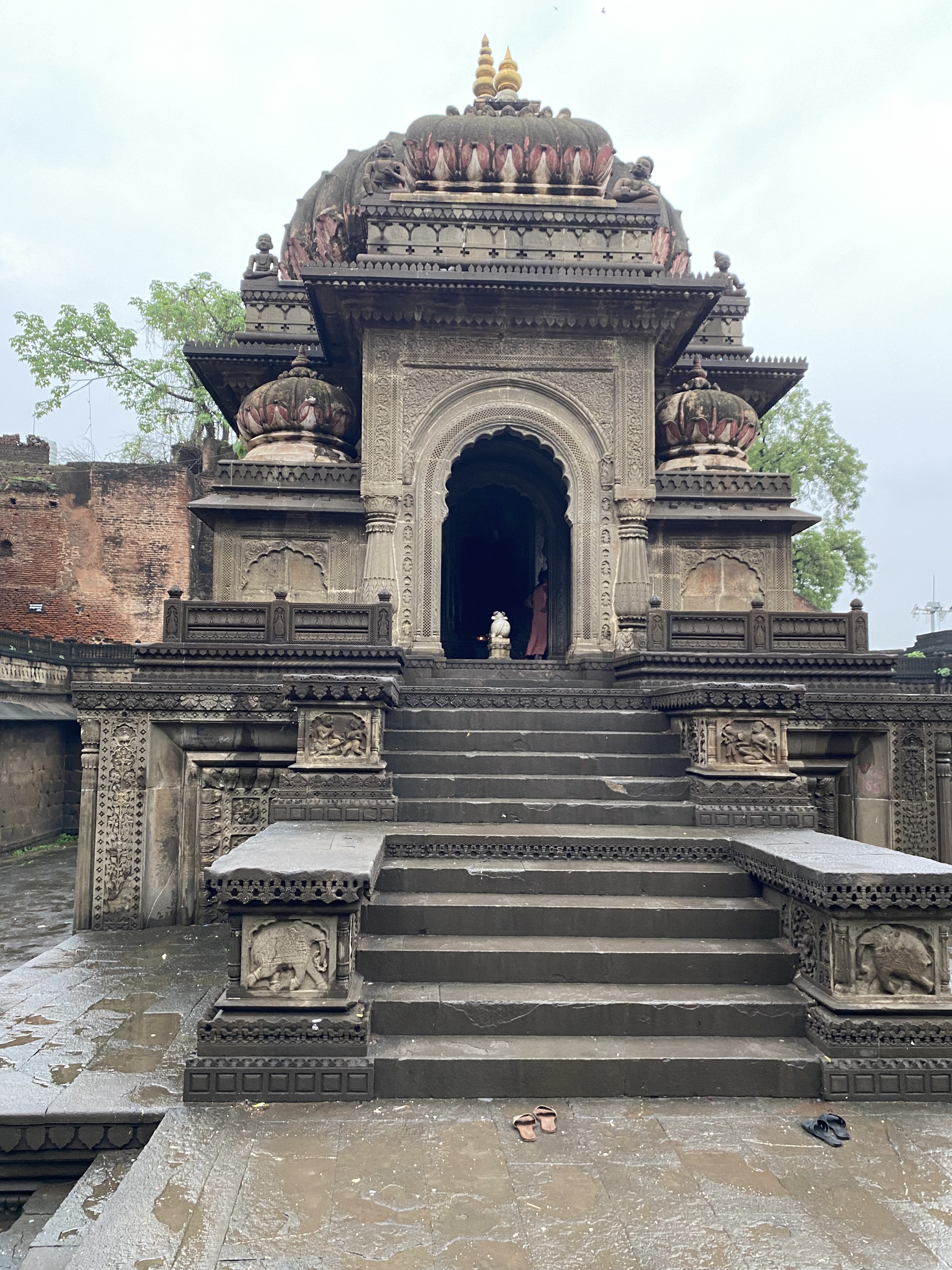
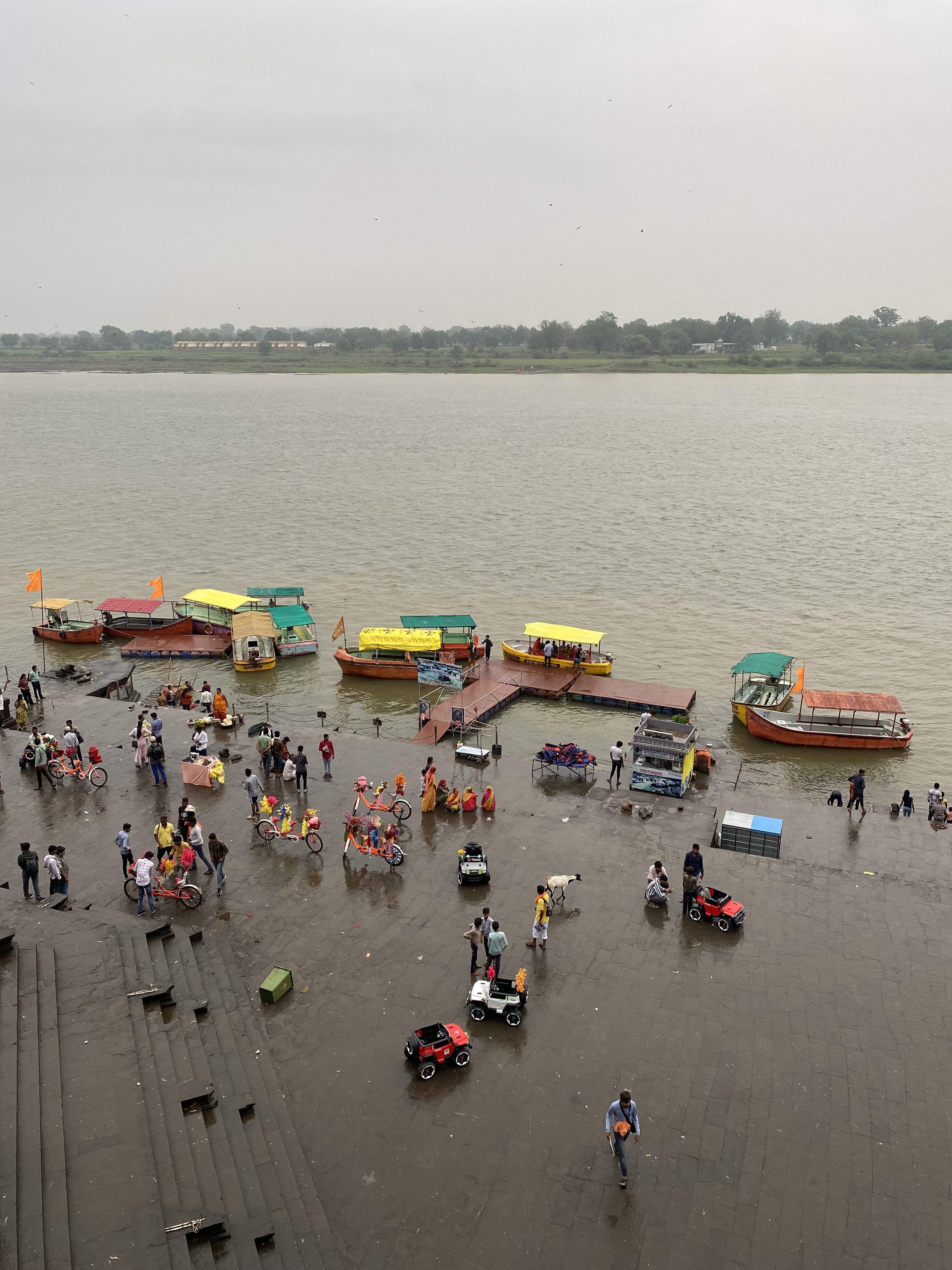
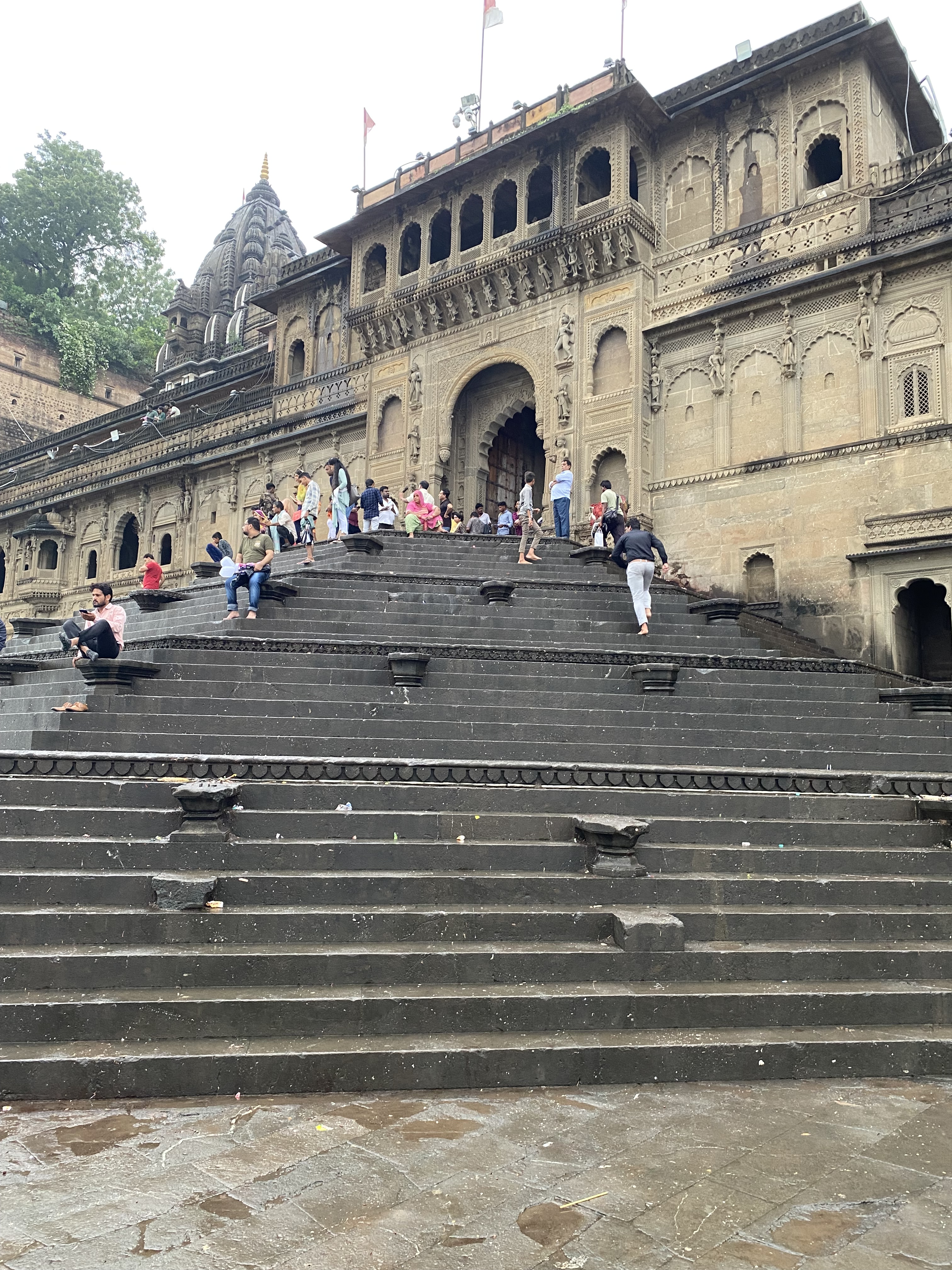
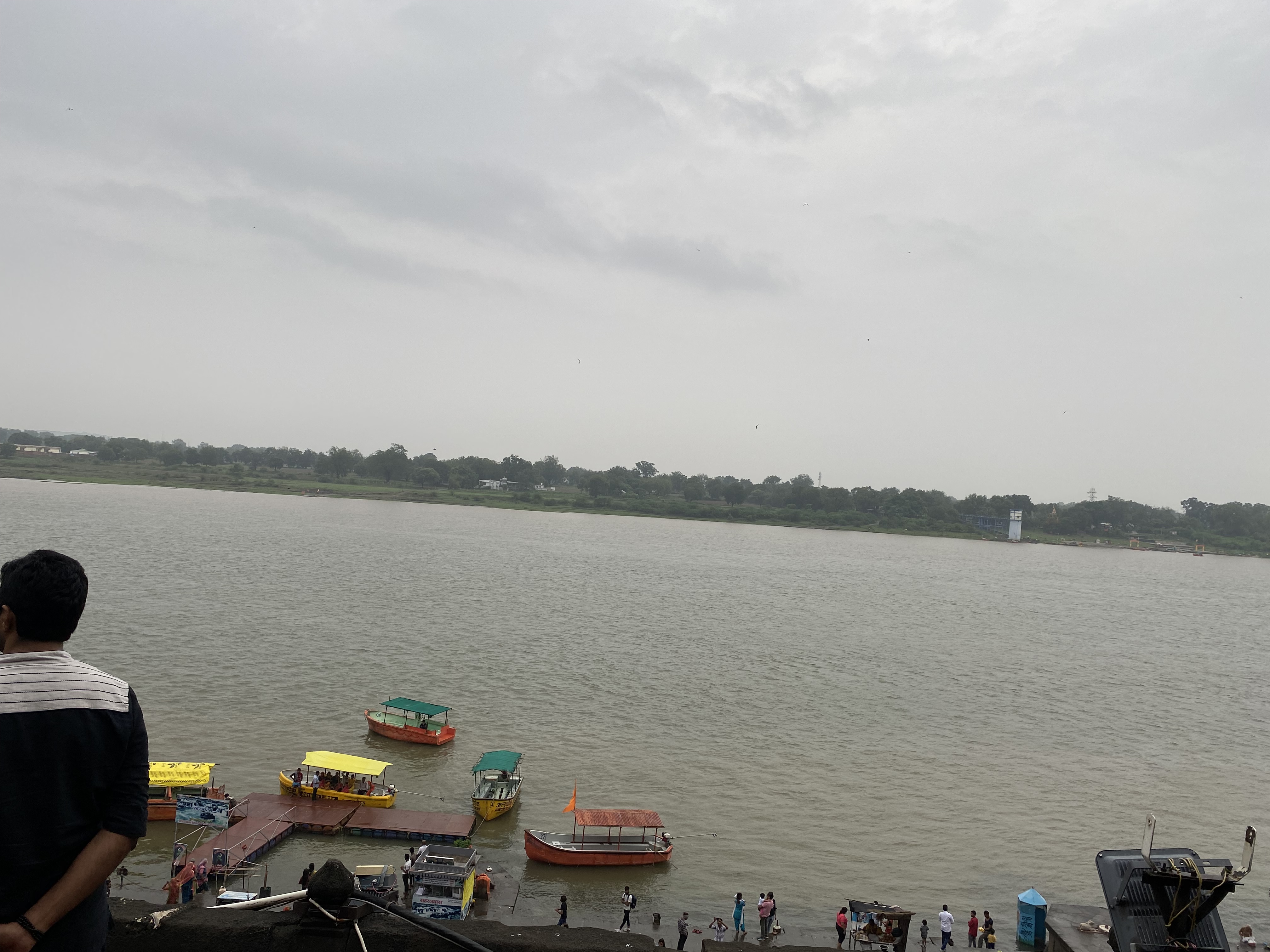
Walking on the ghats, with a cool breeze caressing our faces and the drizzle cooling us down further was a thoroughly enjoyable experience. Recalled some of the films shot here — ‘ Dabbang 3’, ‘Padman’ and ‘Yamla Pagla Deewaana’ came to mind. Could visualise the background dancers on the steps leading down to the ghats dancing in ‘Alai Payuthe’. Interestingly, the Maheshwar ghats pass off as the ghats in Varanasi in the film ‘Padman’. Now we climbed up a little and reached the Ahileshwar Temple. A beautiful, paved pathway leads us to the next temple, Raja Rajeshwar Temple. A very clean courtyard and temple precincts. The priest explained that the temple is also known as the Akhand Deep mandir since 11 lamps here have been burning continuously since pre-historic times in honor of Agni. The ghee required for the continuous glowing of these lamps is provided by devotees. The inside of the sanctum sanctorum is lined with mirrors.

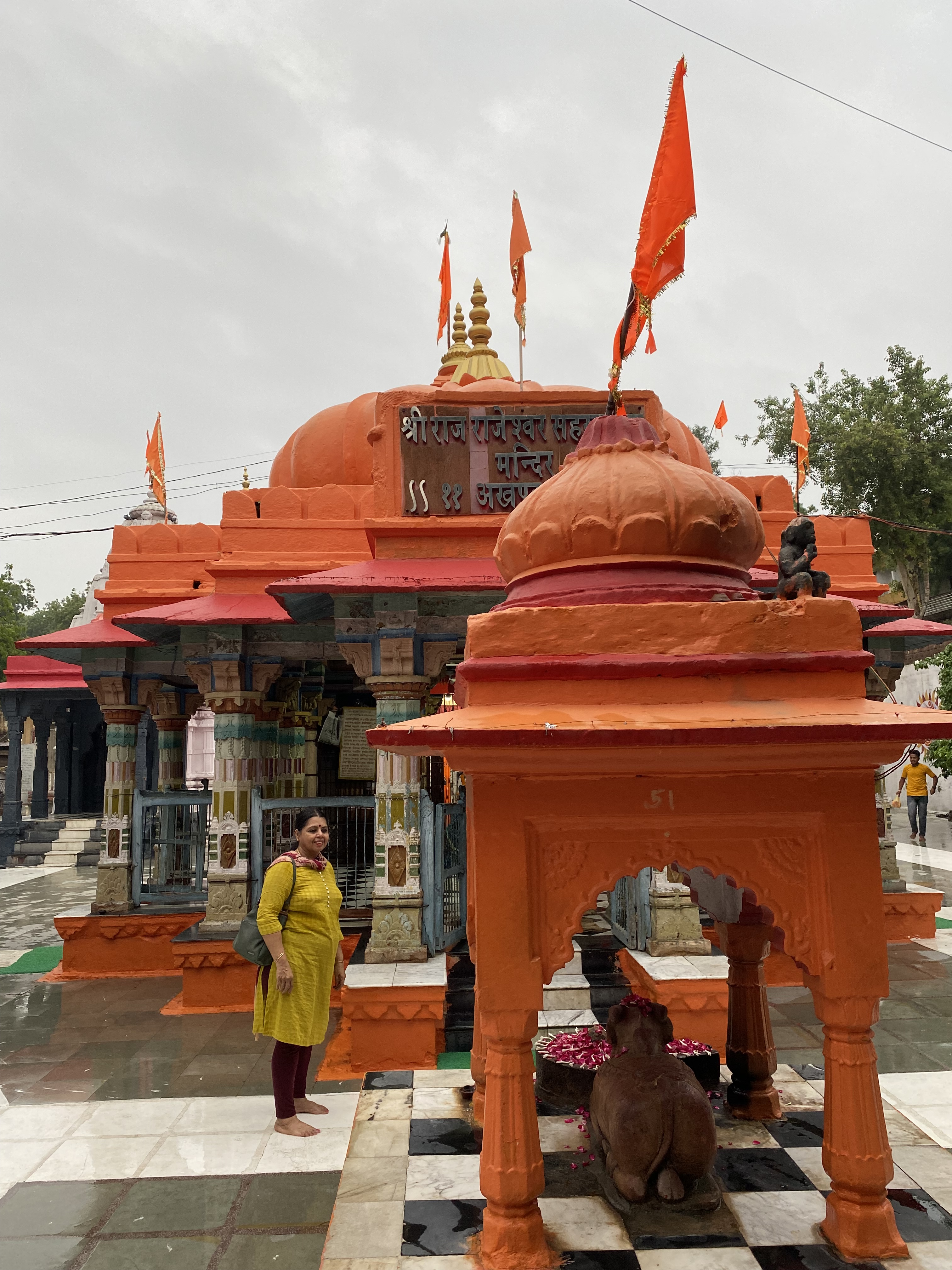
Time to visit the Kashi Vishwanath temple which is further up and almost close to the road level. This temple is said to have been built by Ahilya Bái Holkar herself and she would walk down daily to pray here. It is believed that, praying here is equivalent to visiting all the jyotirlings in different places.
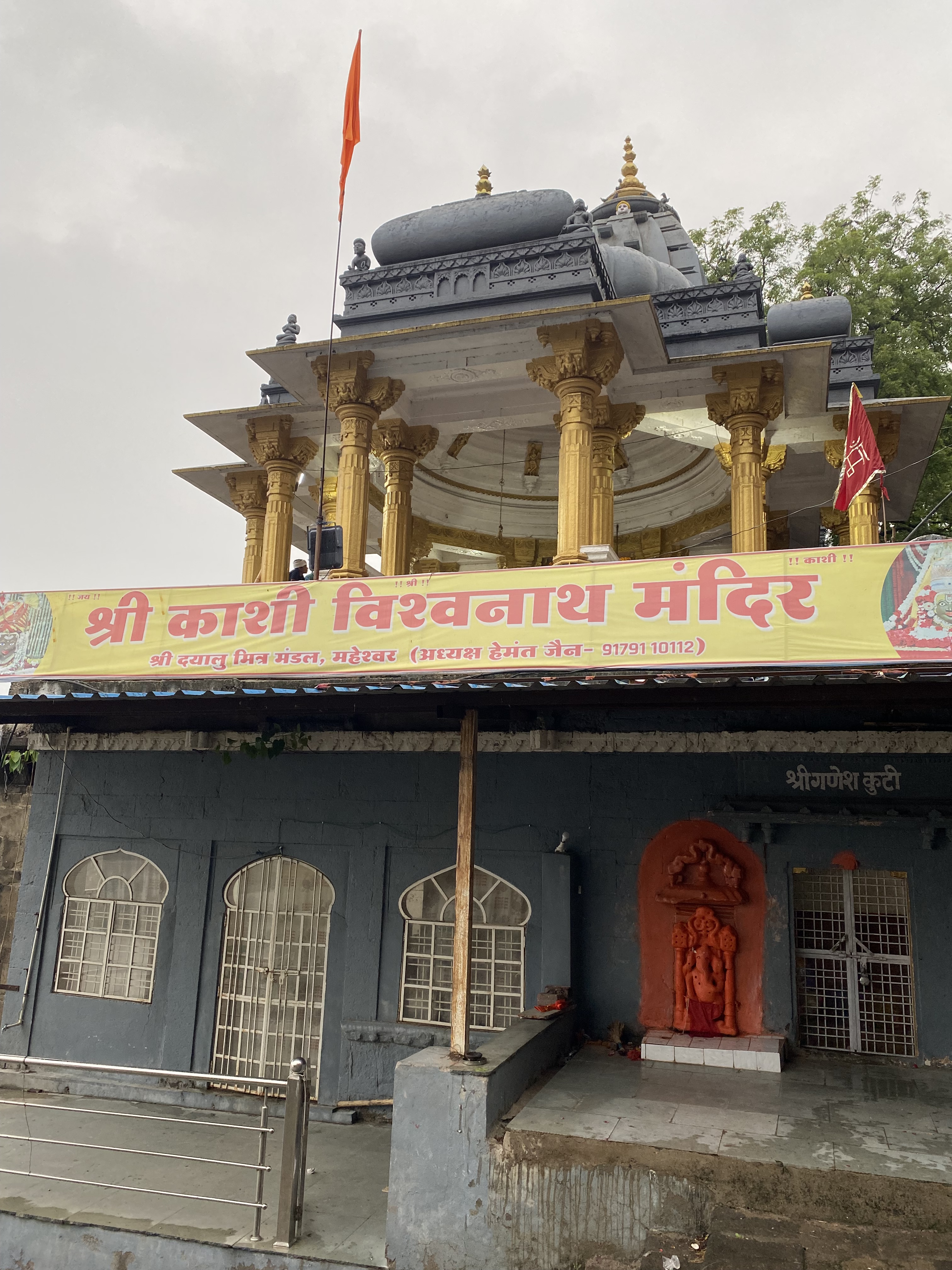
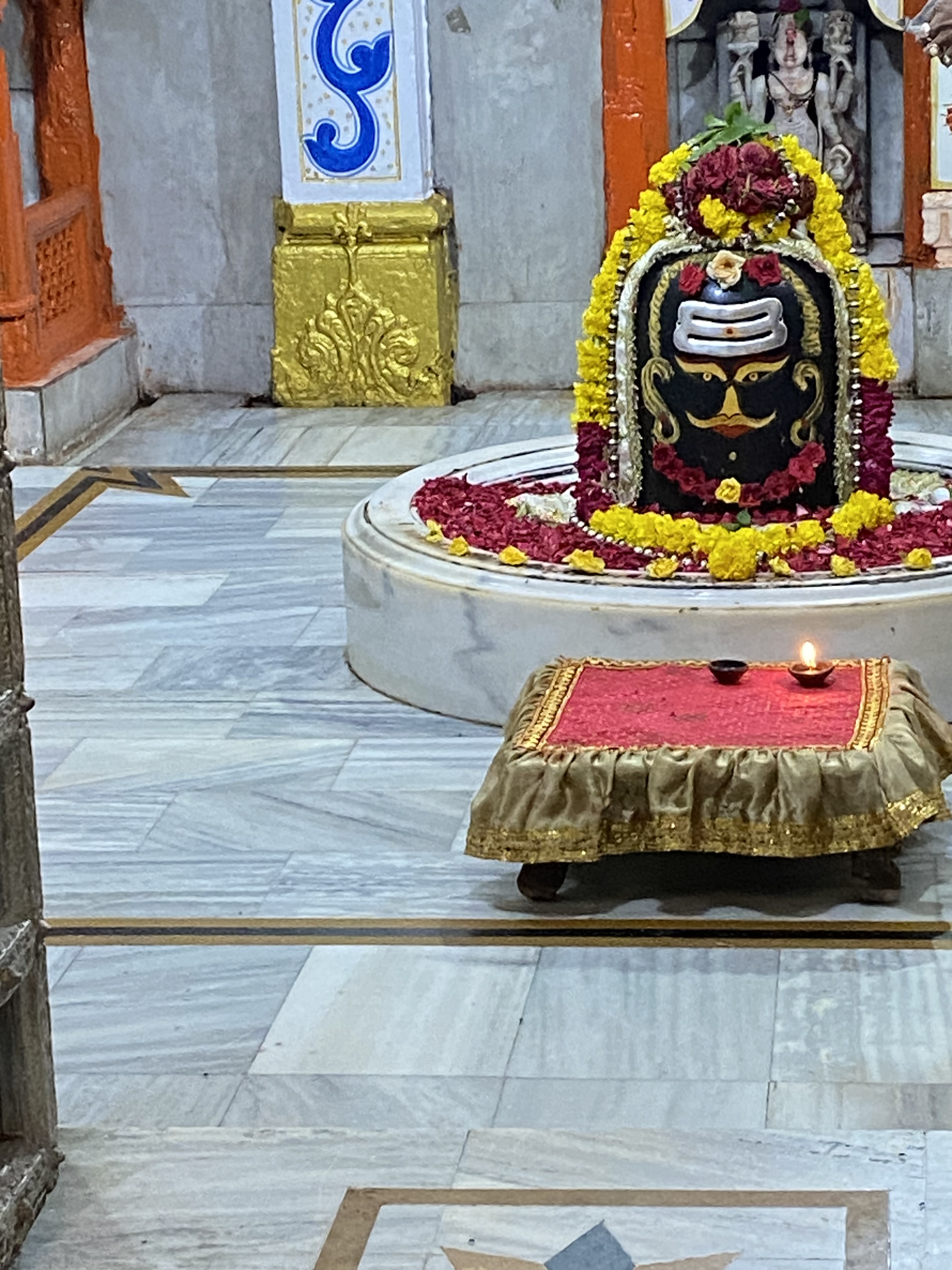
Walked up to the road where our car was waiting. Hopped along to our next destination — shops for purchasing Maheswari sarees. Too exhausting to write about the experience. Suffice to say, we got very good deals on genuine Maheshwari sarees. So, back to the hotel, dinner and dreaming of the other famous woman of Madhya Pradesh, whose history we would see the next day.
The following morning was bright and sunny but as we were to drive uphill to Mandu or Mandav, as it is called, we may not feel the intense heat, we assumed. Driving along tree-lined roads, with small valleys on both sides, we wound our way uphill. We were told there were seven ancient gates (stone structures) to be crossed before entering Mandav. None were on this road, and we would see two of these gates (Alamgir Gate for one), while returning to Indore by a different route. Mandav is a town steeped in history. There is nothing else but for the historical monuments spread across this town, perched atop the Vindhyas in the Malwa-Nimar region. Lush greenery all round, with monuments sticking out in between! The town has a clear Islamic influence even if it was initially ruled by the Paramara kings. Later, taken over by the Delhi sultanate, Afghans & then the Mughals, the Islamic influence is not surprising.
The famous woman from these parts? I was already humming the popular song ‘ Aa laut ke aaja mere meet, tujhe mere geet bulate hain’ from the film ‘Rani Roopmati’. Yes, the poetess, queen Rani Roopmati is the acknowledged heroine of this area — A simple Hindu shepherdess and her love affair with a Muslim ruler, Baz Bahadur forms part of history, legend and romanticism. Baz Bahadur, encouraged her singing, fell in love with her, did not pay enough attention to his kingdom and as a result when, the Mughals led by Adham Khan attacked Mandu, Baz Bahadur fled the kingdom. It is said Adham Khan’s attack on Mandu was mainly driven by his infatuation with the beautiful Roopmati. After the defeat of Baz Bahadur, Roopmati poisoned herself rather than fall into the hands of Adham Khan. A love story with a tragic ending. There are many missing links in the whole narration though.
So… here we were at the Rani Roopmati Palace, said our driver. Got off, purchased our entry tickets and started climbing the steps to reach the Rani Roopmati Pavilion (its rightful name). A small road can also be used to walk up, something we tried while coming down.
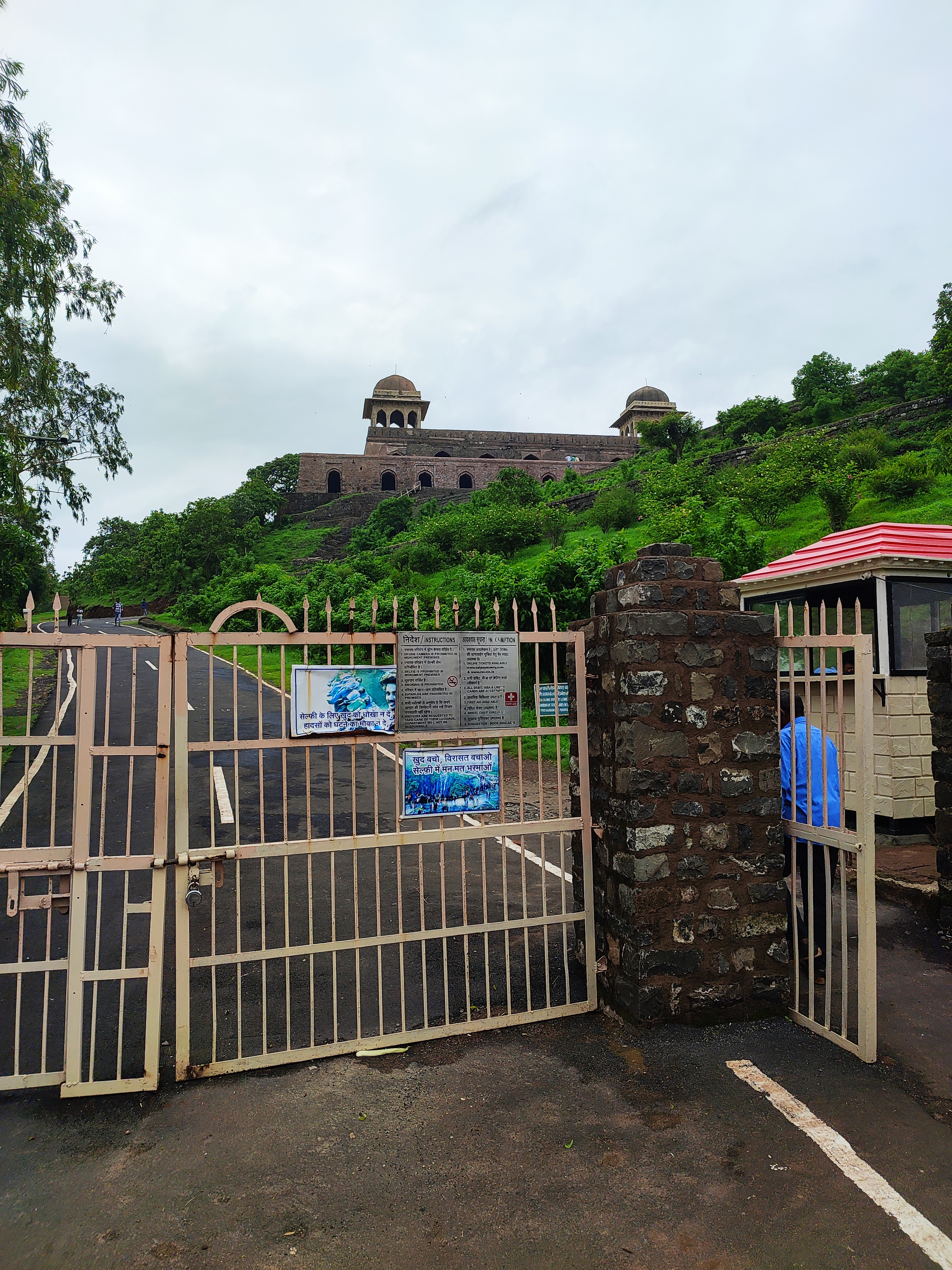
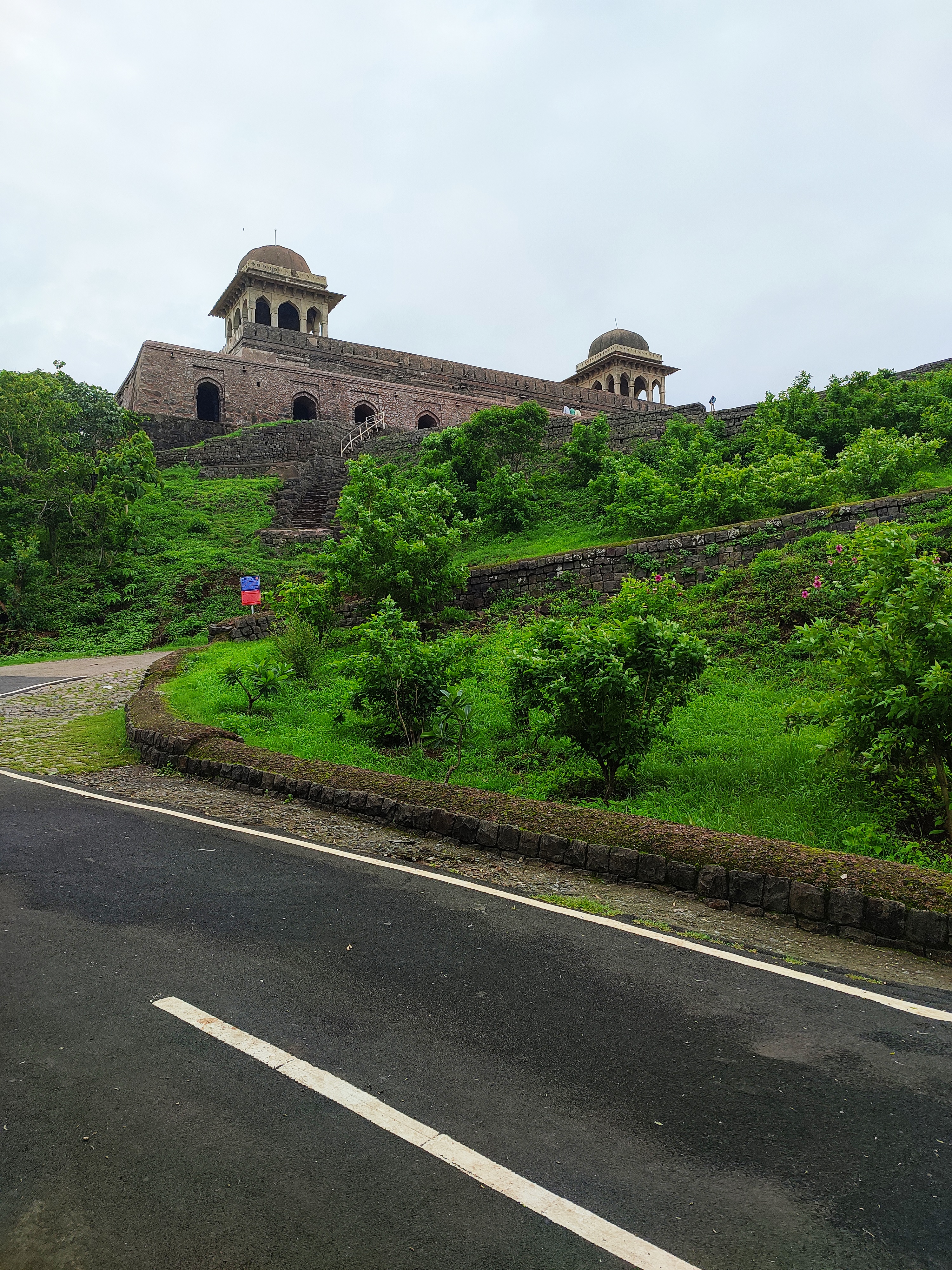
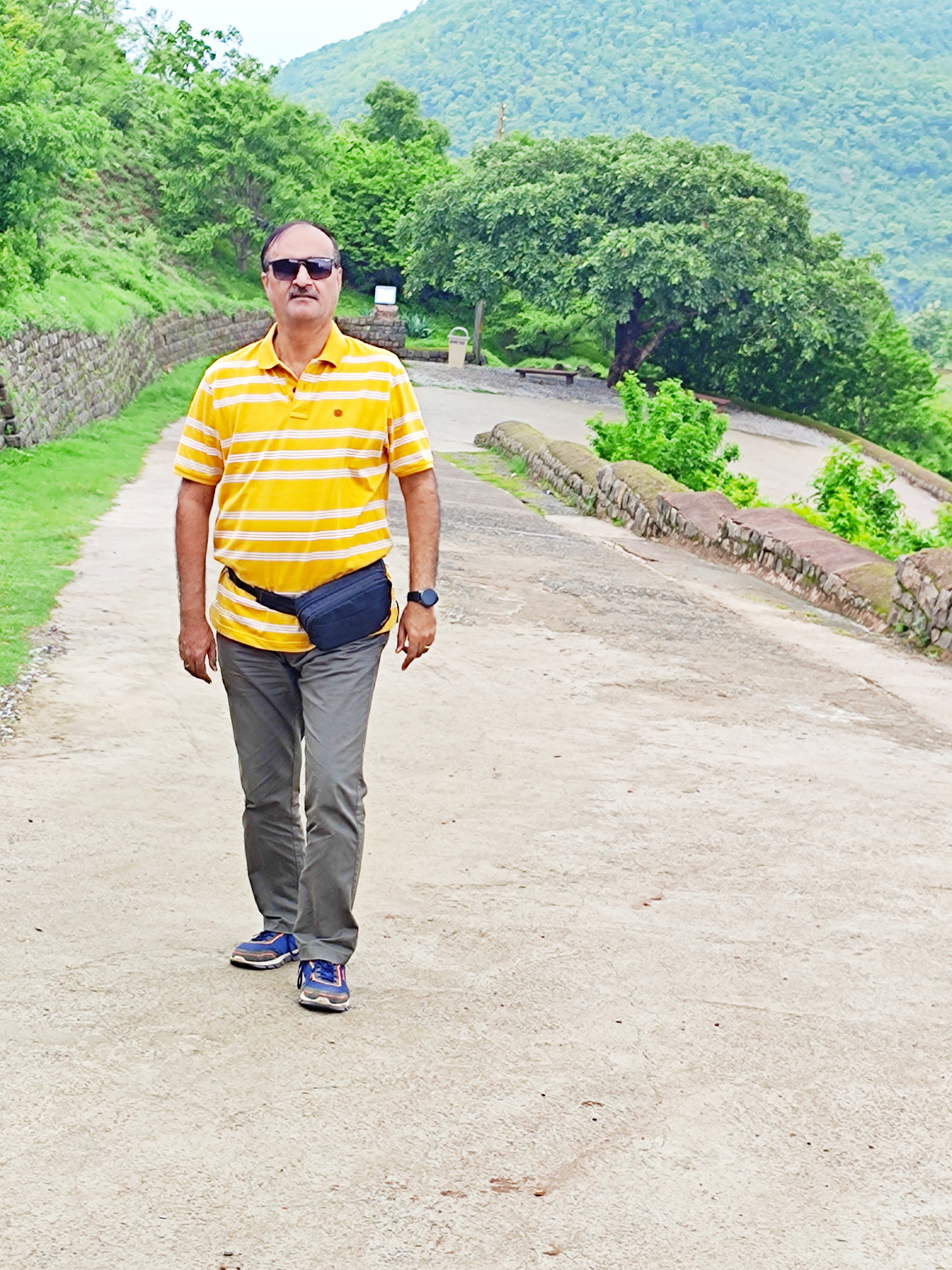
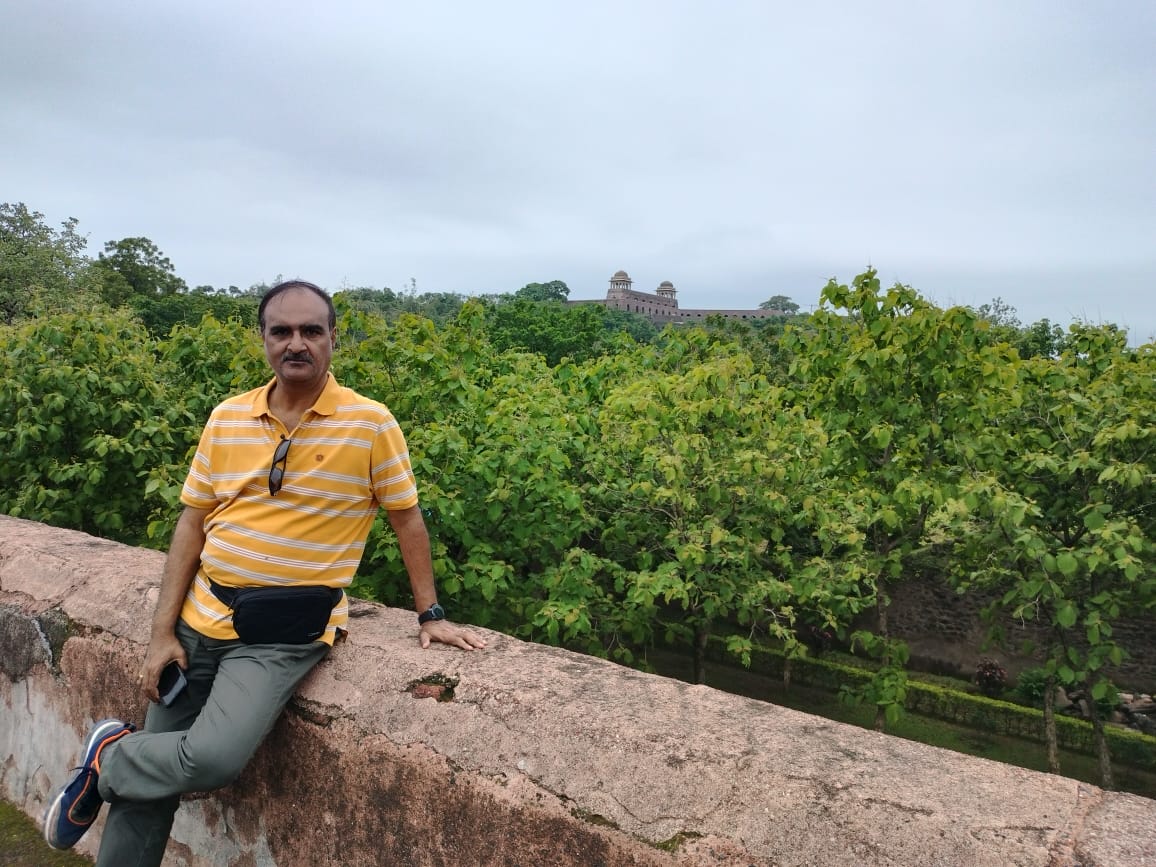
No crowd at all. When we reached the top, were a bit unnerved at finding the monument totally bereft of humans. Wait a minute…. a lone figure was approaching us. He said he was a guide from the local town and we heaved a sigh of relief. Good to have someone to talk to (and click pictures) and the fee quoted was Rs.100.
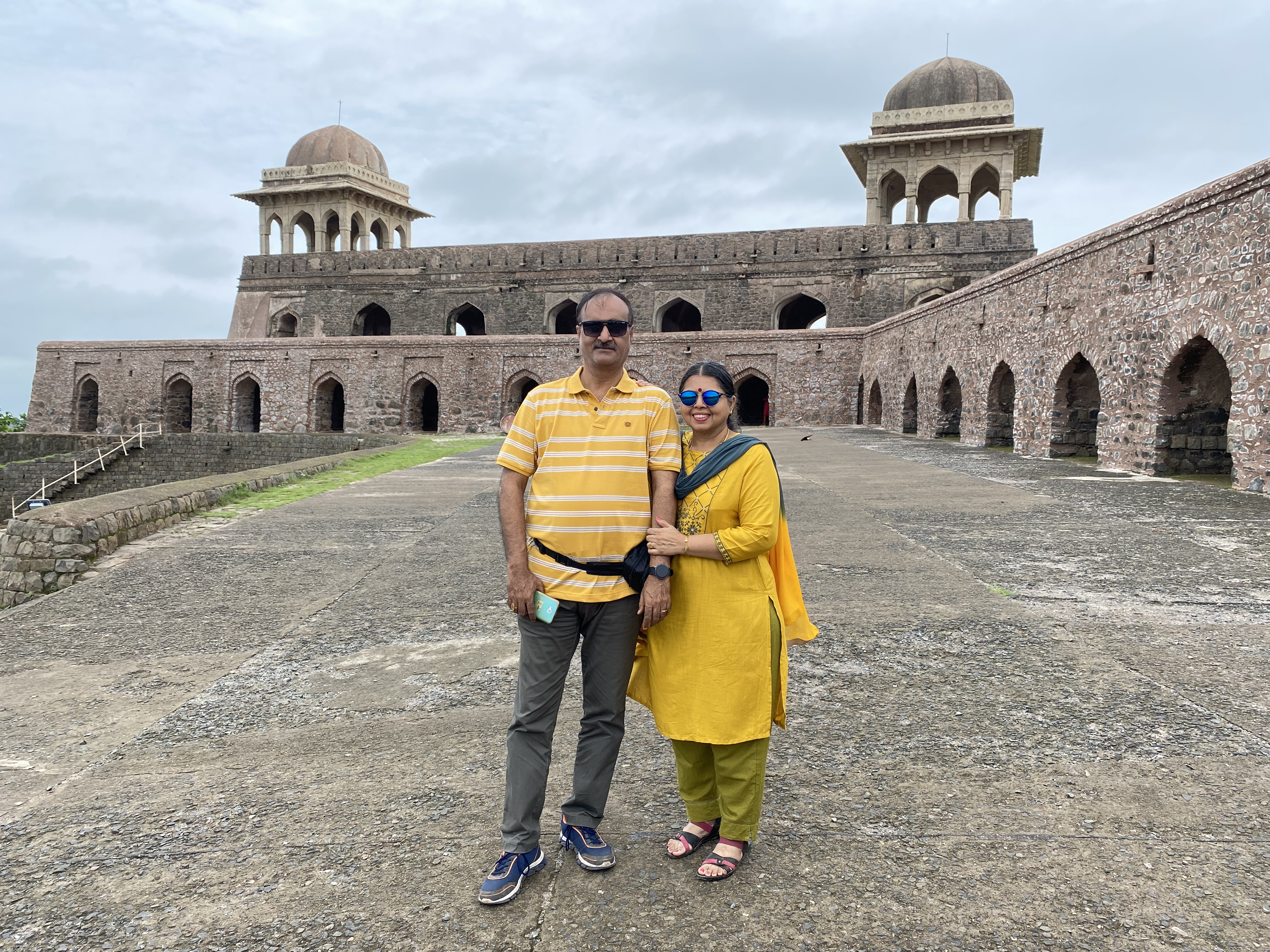
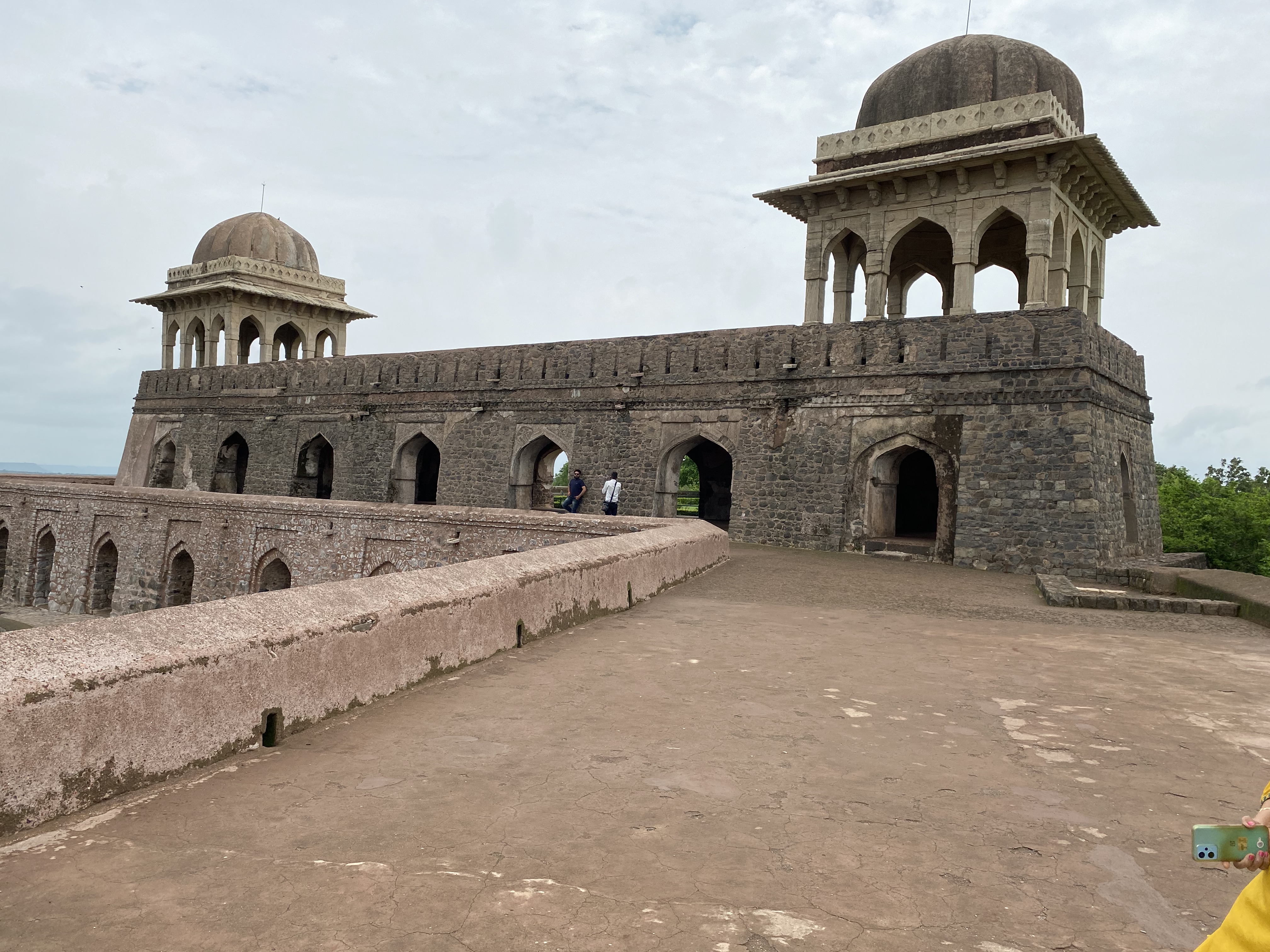
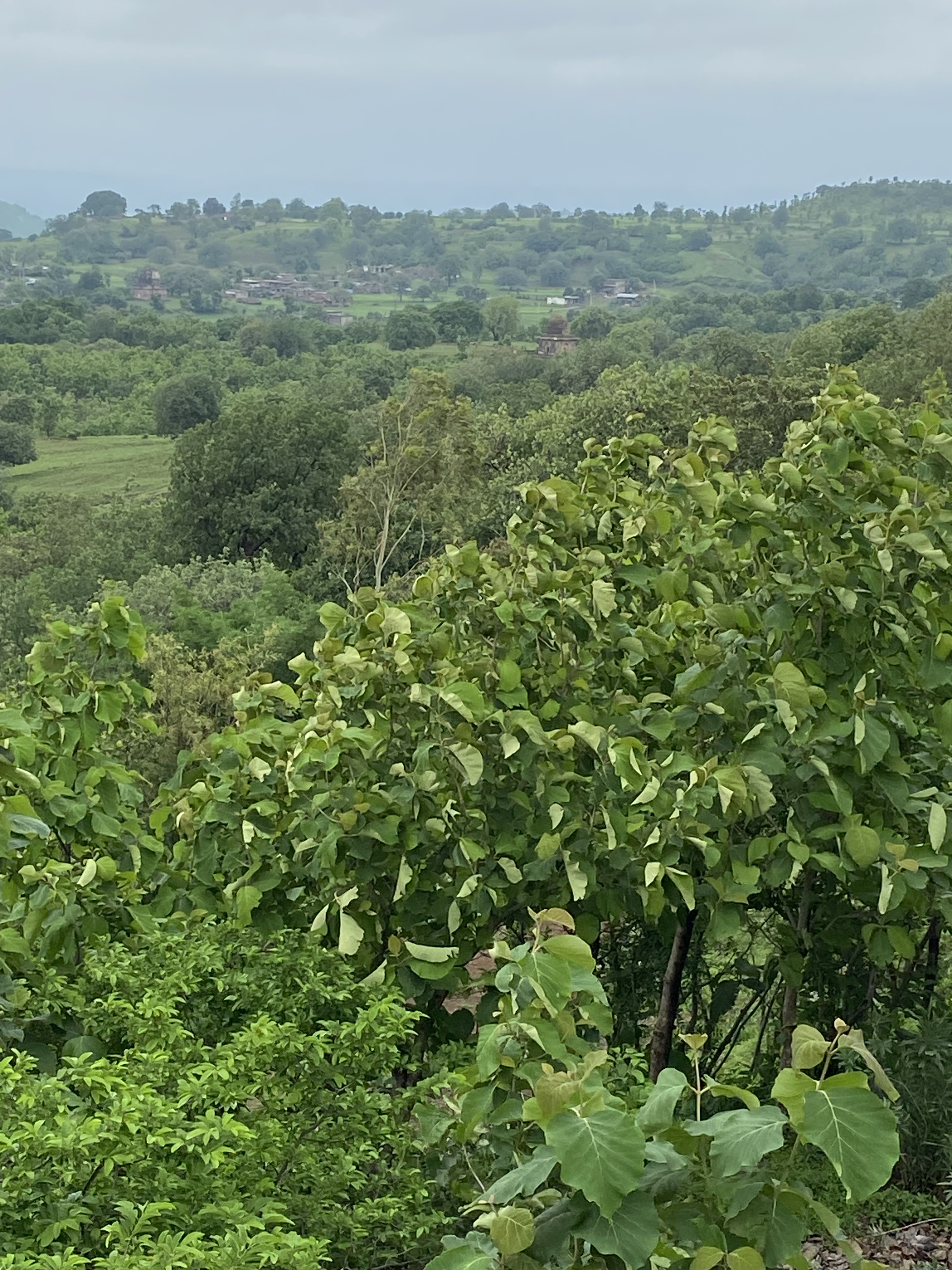
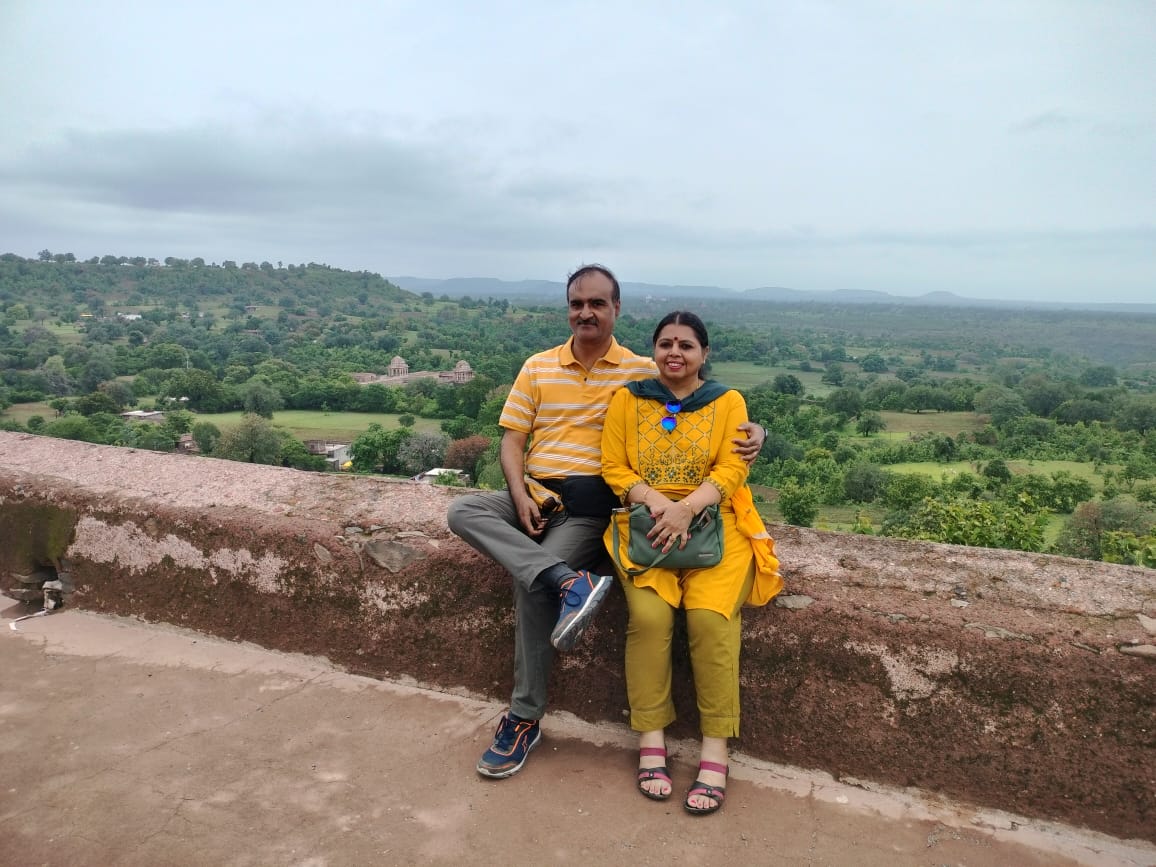
Rani Roopmati Pavilion was a watchtower (two of them, actually) where sentinels used to watch over the Nimar plains and the Malwa kingdom below. It is said Rani Roopmati used to come over here daily on palanquin to have a darshan of the Narmada, far out in the distance and also possibly to gaze at her paramour, Baz Bahadur’s palace below. When we asked where Rani Roopmati’s palace was, there was no proper response from the guide. The literature available too does not mention this. Were Roopmati & Baz Bahadur married? Did they live together in Baz Bahadur’s palace? Grey areas where history and folklore are silent. There is wall running round the entire structure and this was supposed to be the border with Nimar. Though the Narmada is not visible these days, the deep valleys on either side present a panoramic view. The ground floor of the Pavilion housed the stables where the horses were kept with rooms for provisions as well. A level above were the watchtowers.

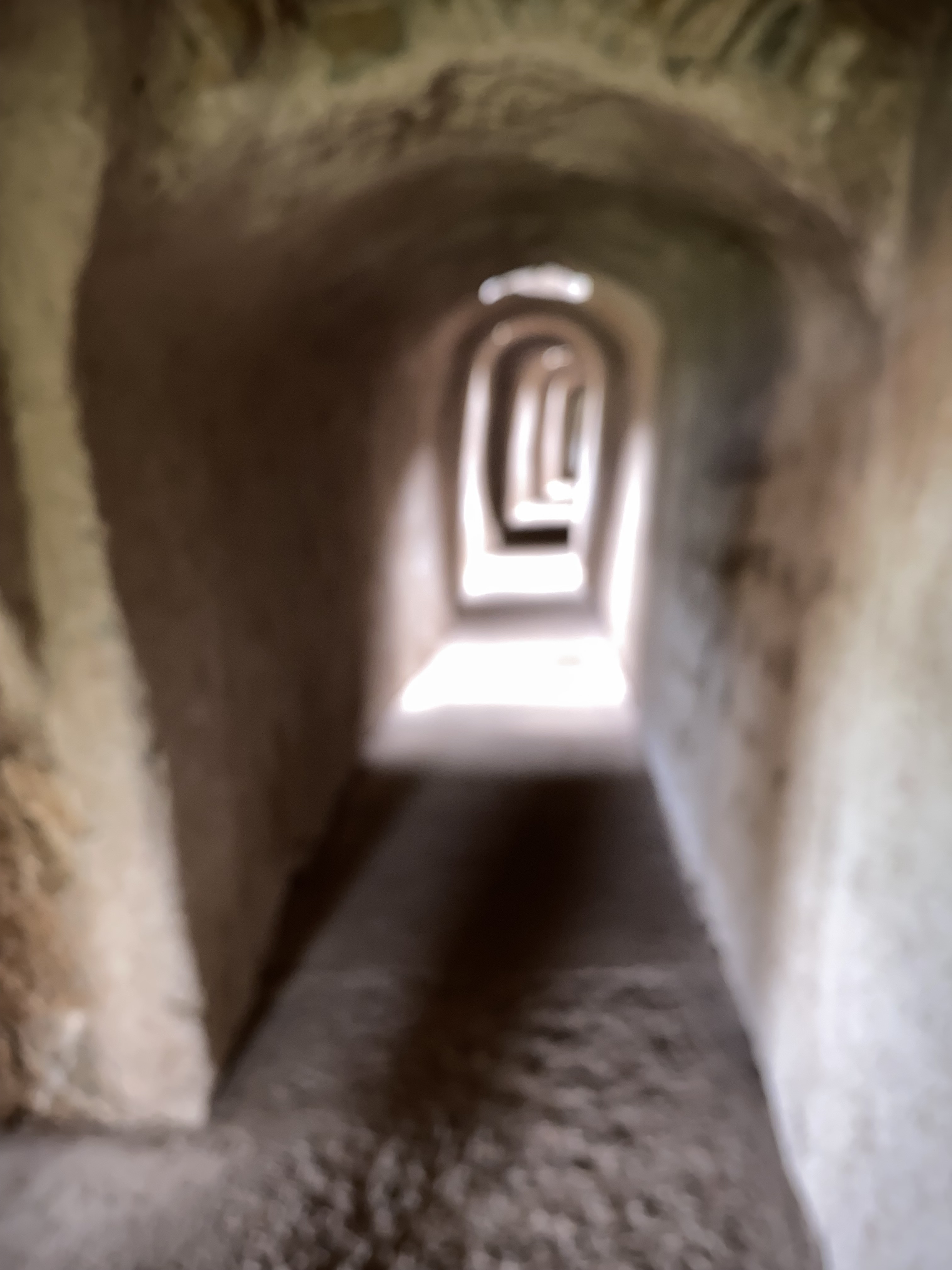
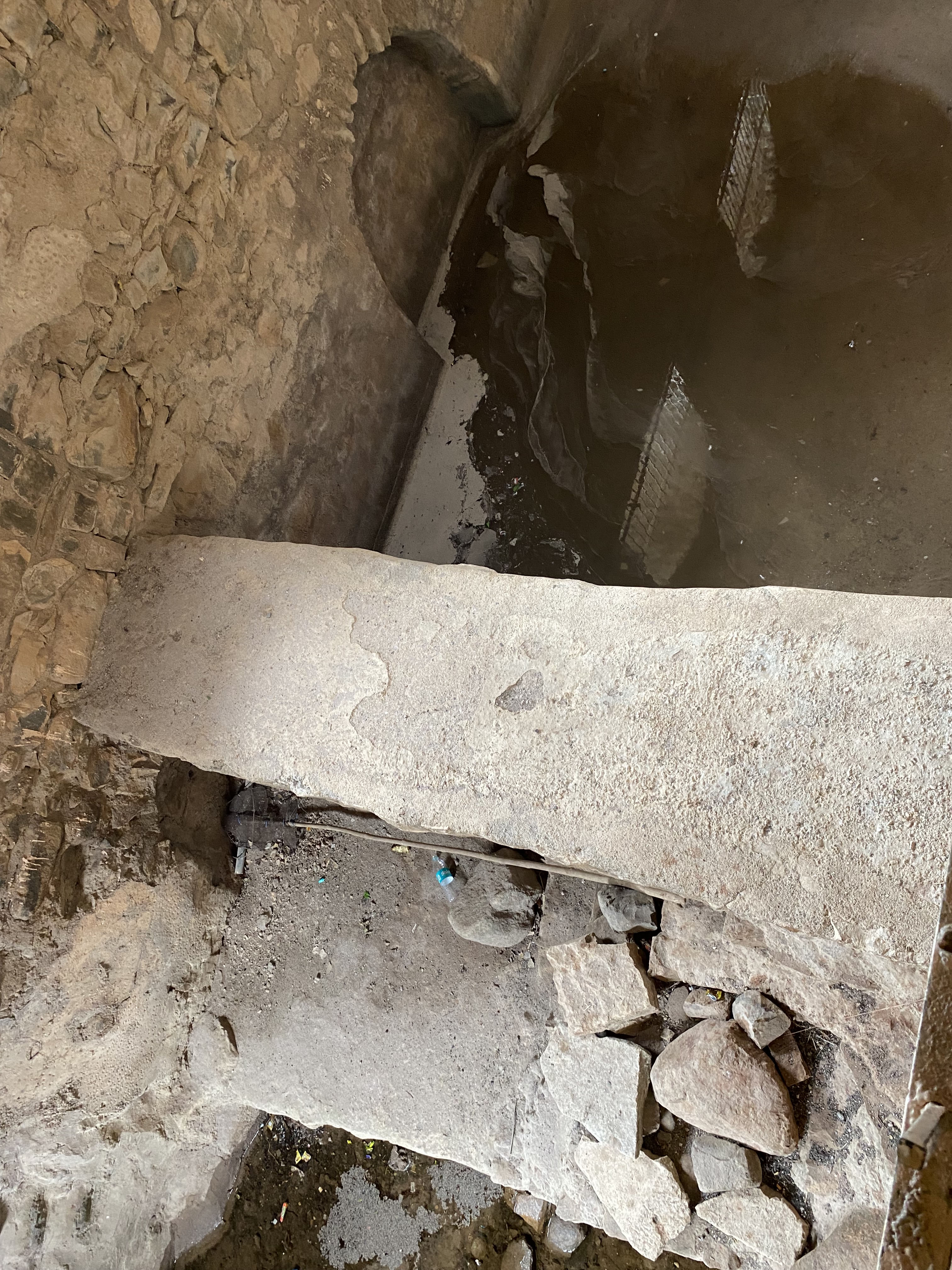
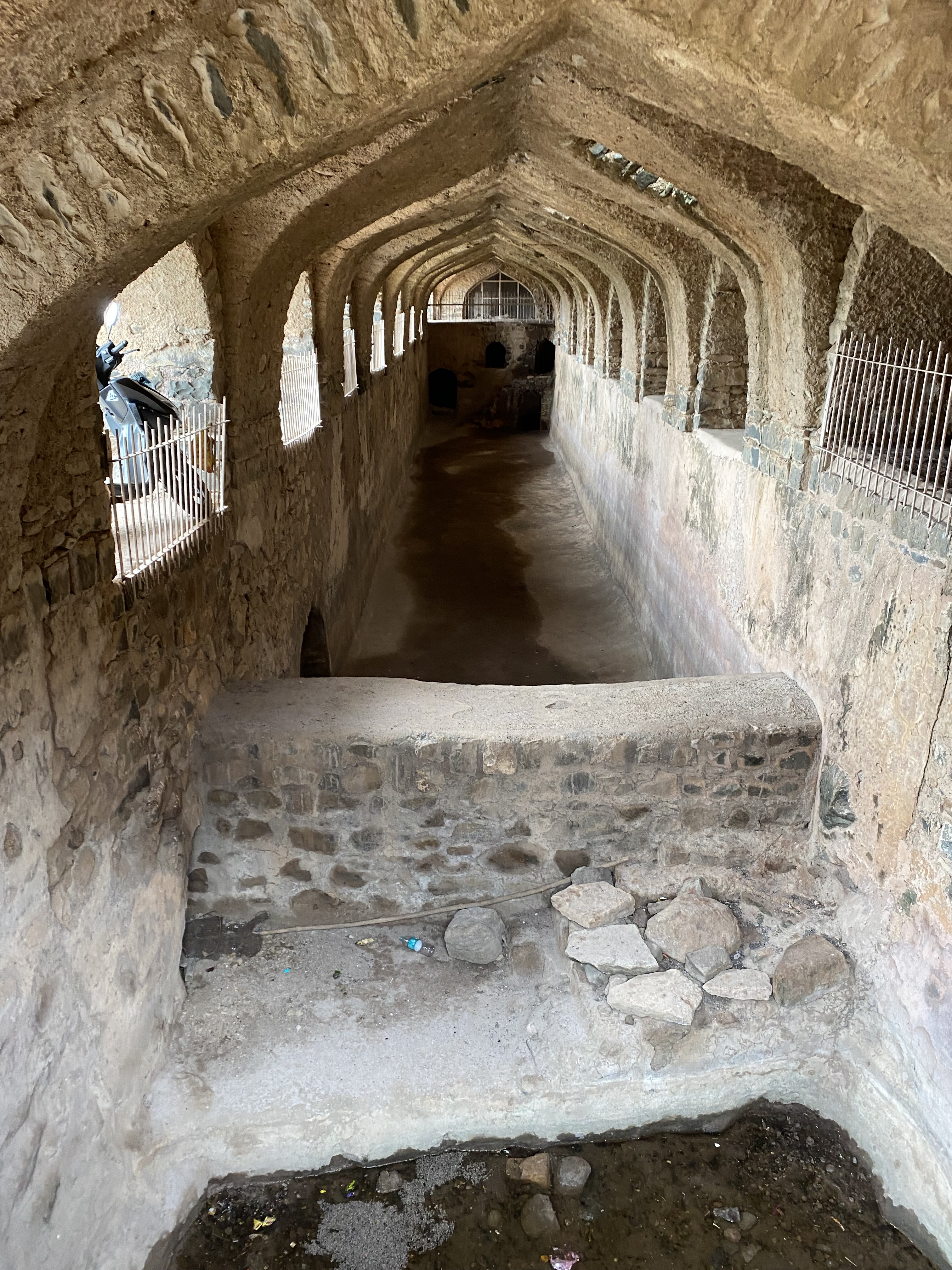
Stepping below the ground, we see an underground chamber for collecting rainwater, rain-water-harvesting from those days. Remarkable. A few swigs of water/lemon juice ( no, not the harvested rain-water) and we were off in our car. En Route, passed the famous Juma Masjid. Not too keen to get off in the heat now, we moved to the Palace of Bagh Bahadur — the place where he enjoyed hearing the songs of Roopmati. Tastefully done, with gardens, courtyards and ponds, one could imagine how it must have looked in its halcyon days.
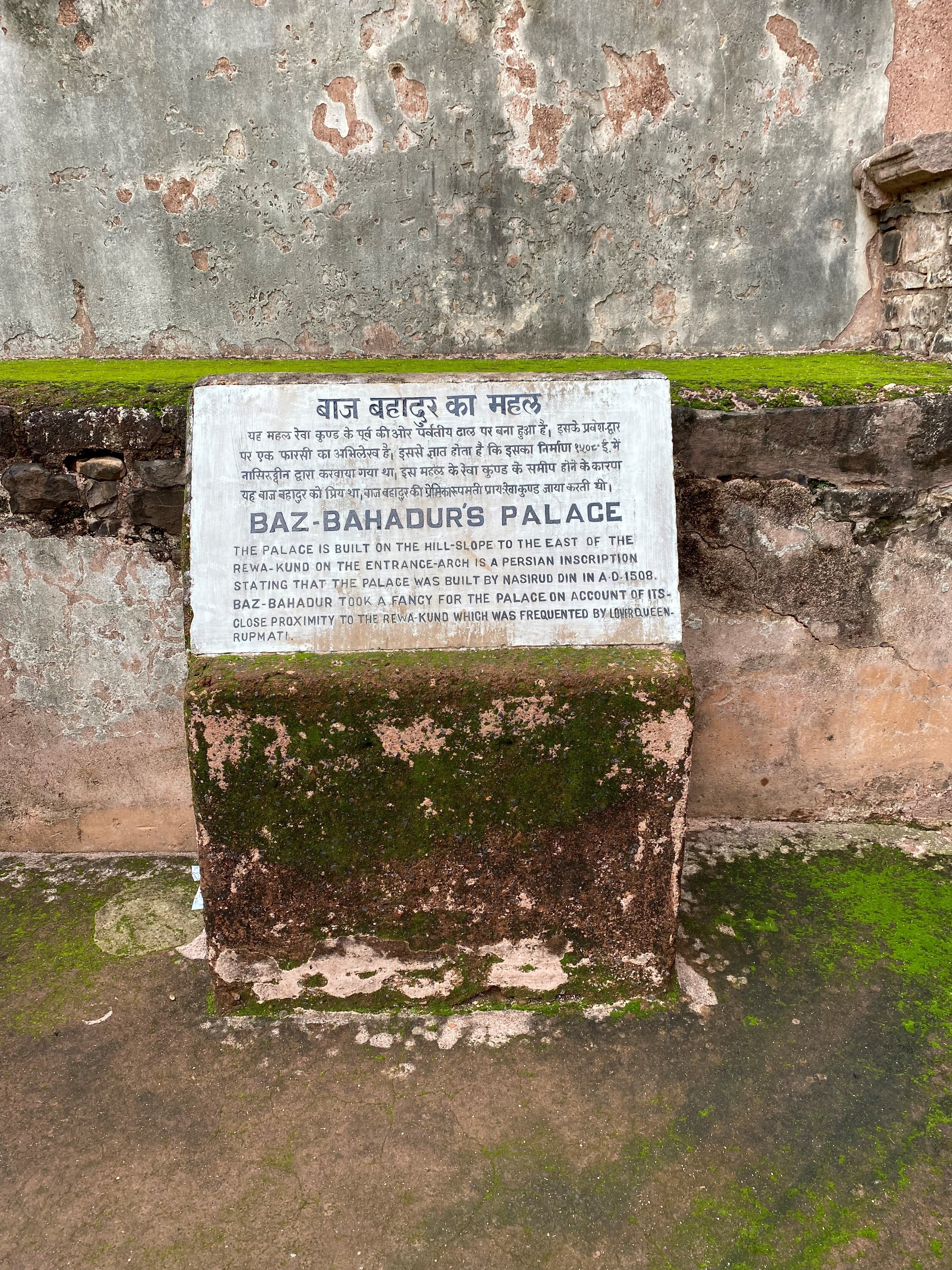
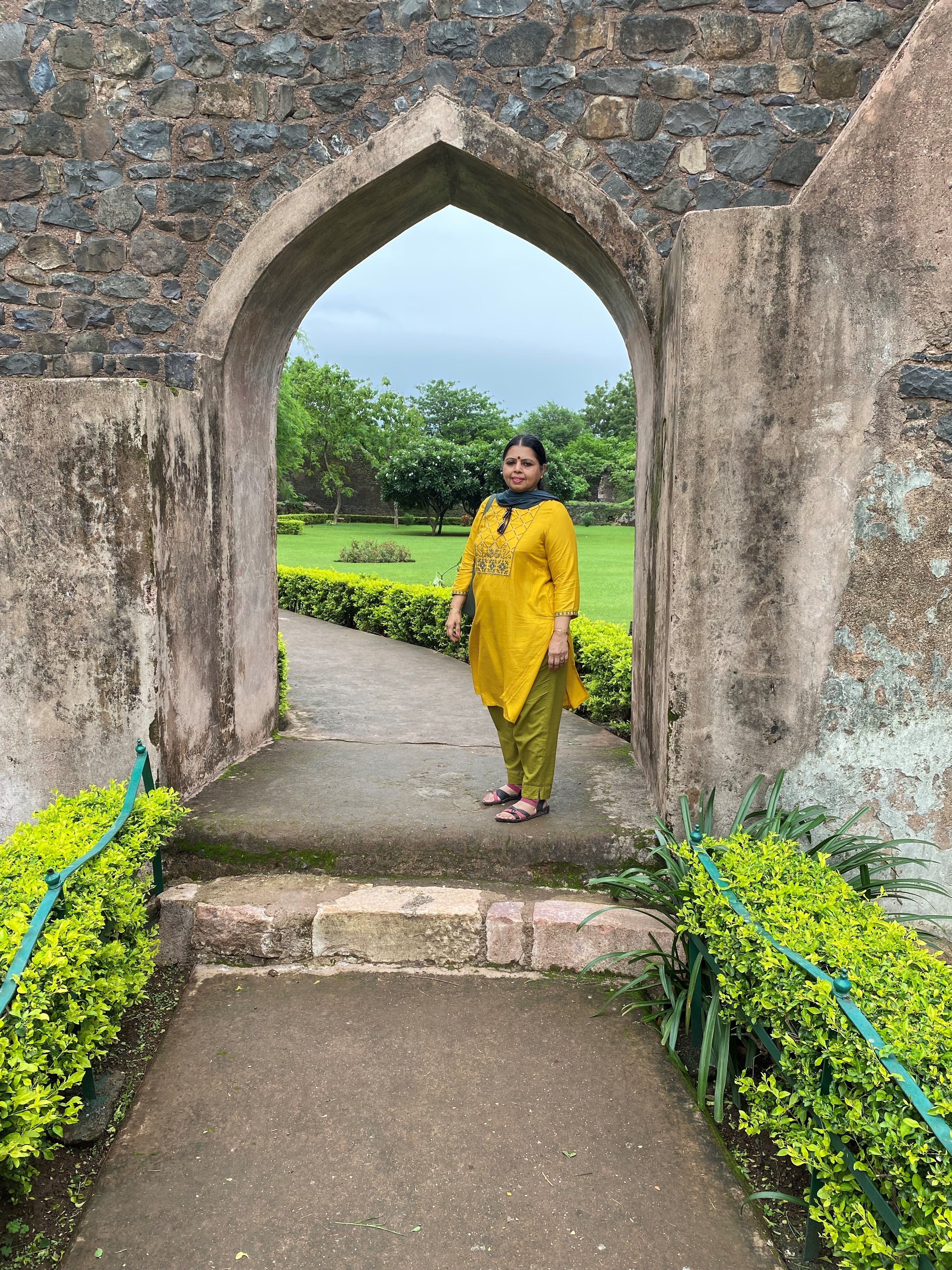
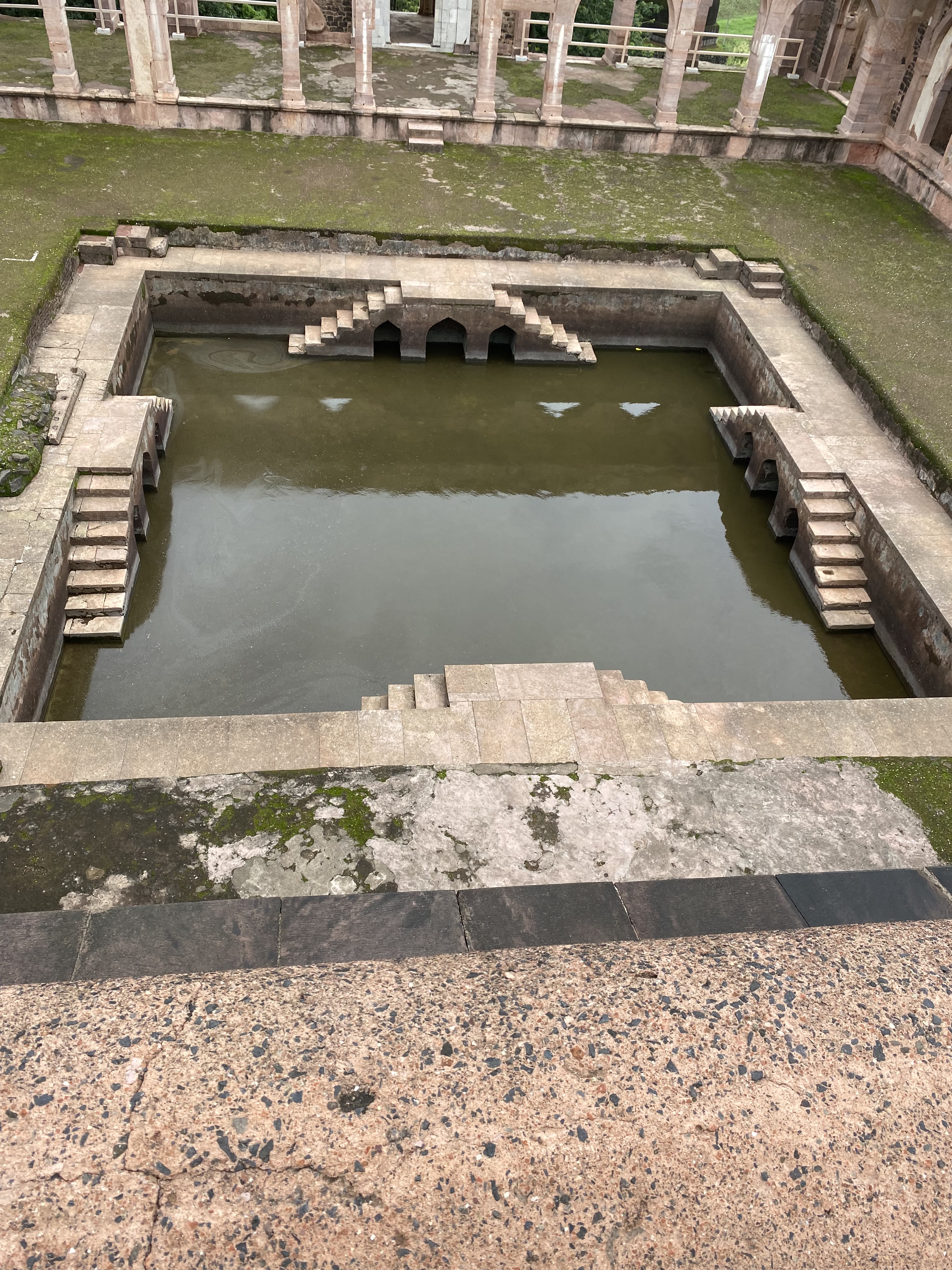
Drove down to the central or touristy part of Mandav. A huge complex wherein we find all the ancient monuments relatively close to one another. The first of these is the Jahaaz Mahal meaning ‘Ship Palace’. It is built in the form of a long, narrow ship where one has to climb the steps to reach the top deck. Interestingly, the palace is built between two water bodies, the Kapoor Talab & the Munj Sagar Talab, thereby giving an impression of a ship lying at anchor. Said to have been built by Ghiasuddin Khilji in the 15th century for housing his harem of 15,000 women. Wow! The terrace is massive and each of the two floors have lotus-shaped pools, which during their heydays would have been filled with water. The steps to the upper flow resembles that in a ship.
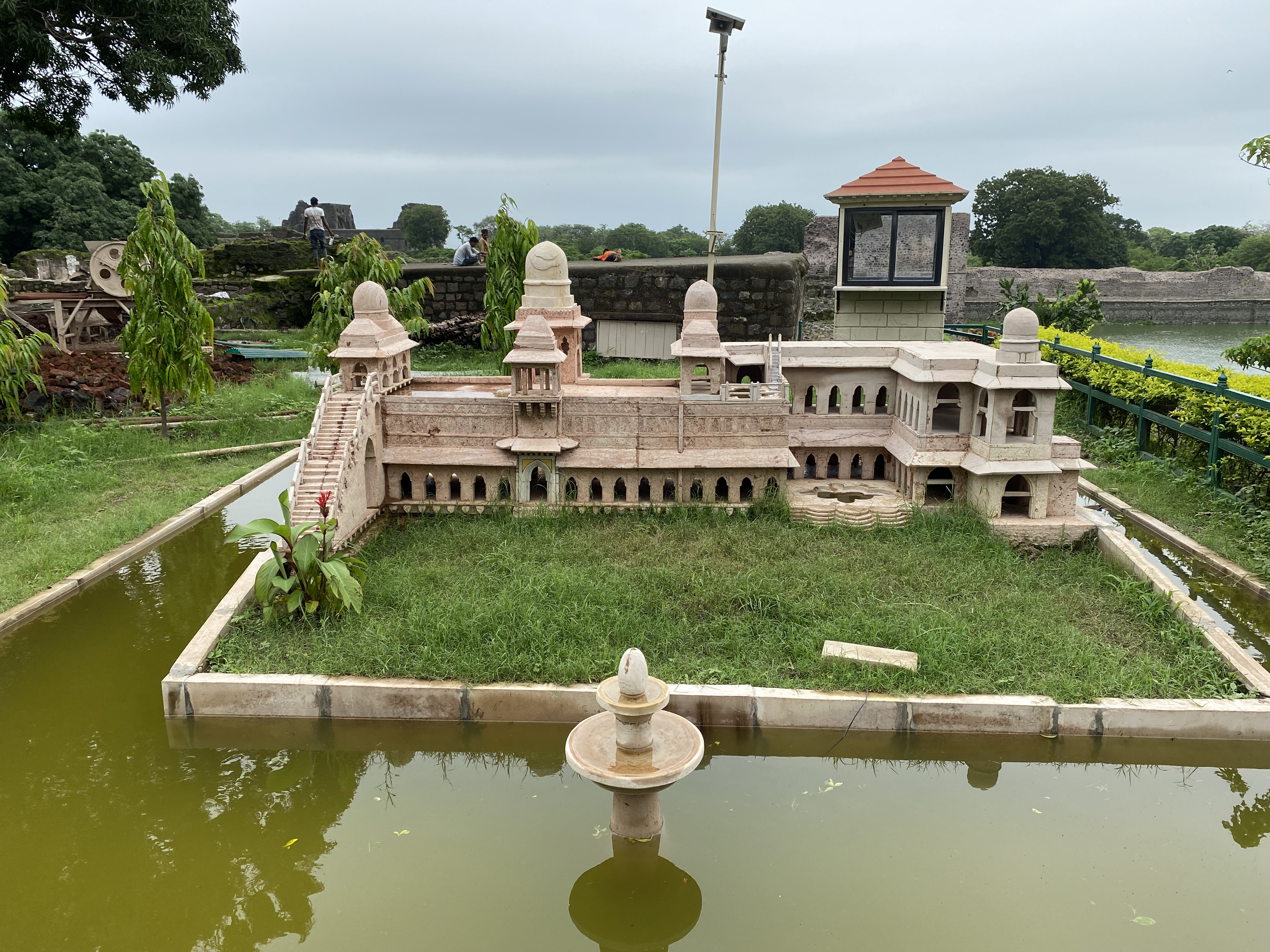
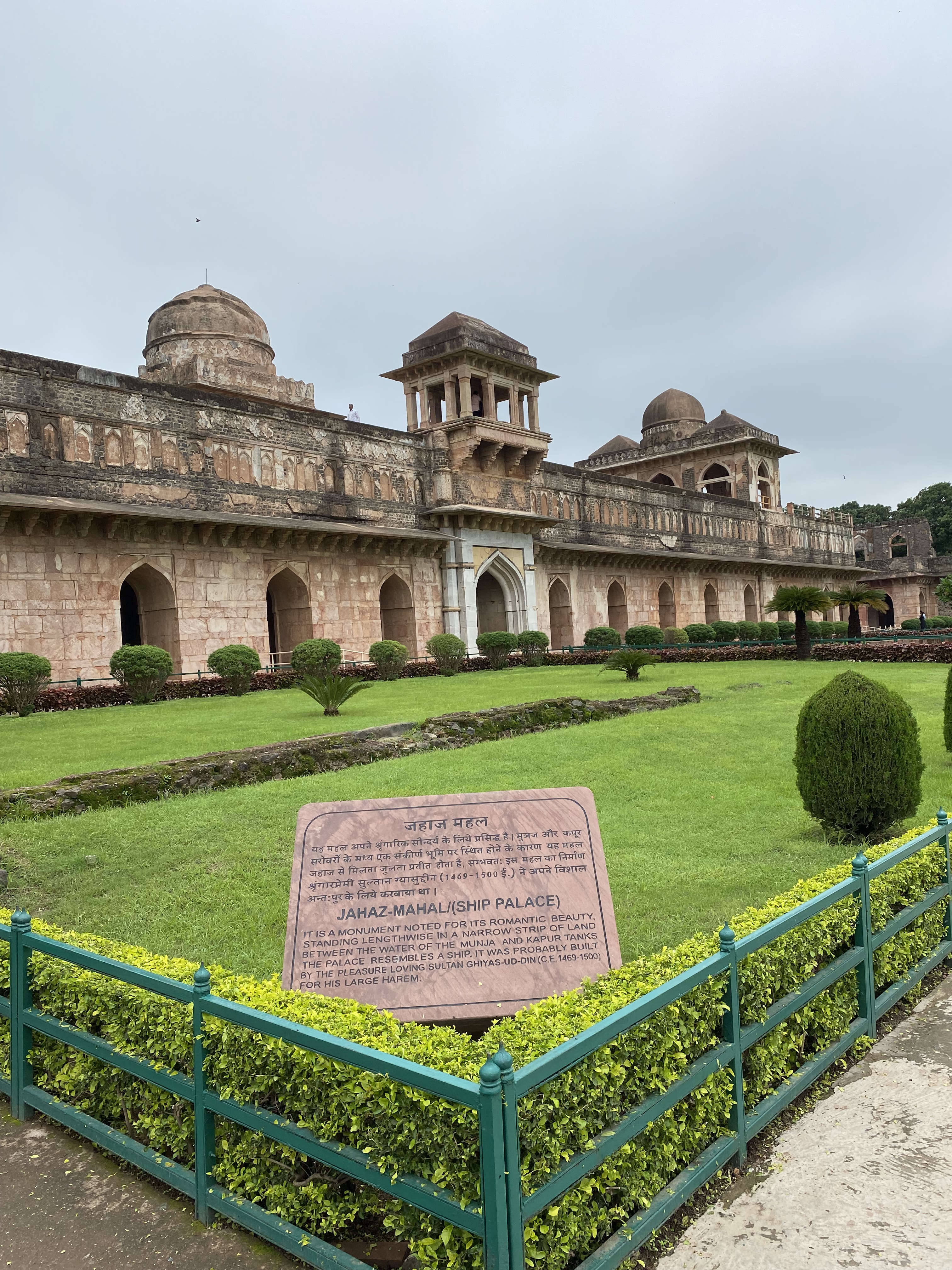
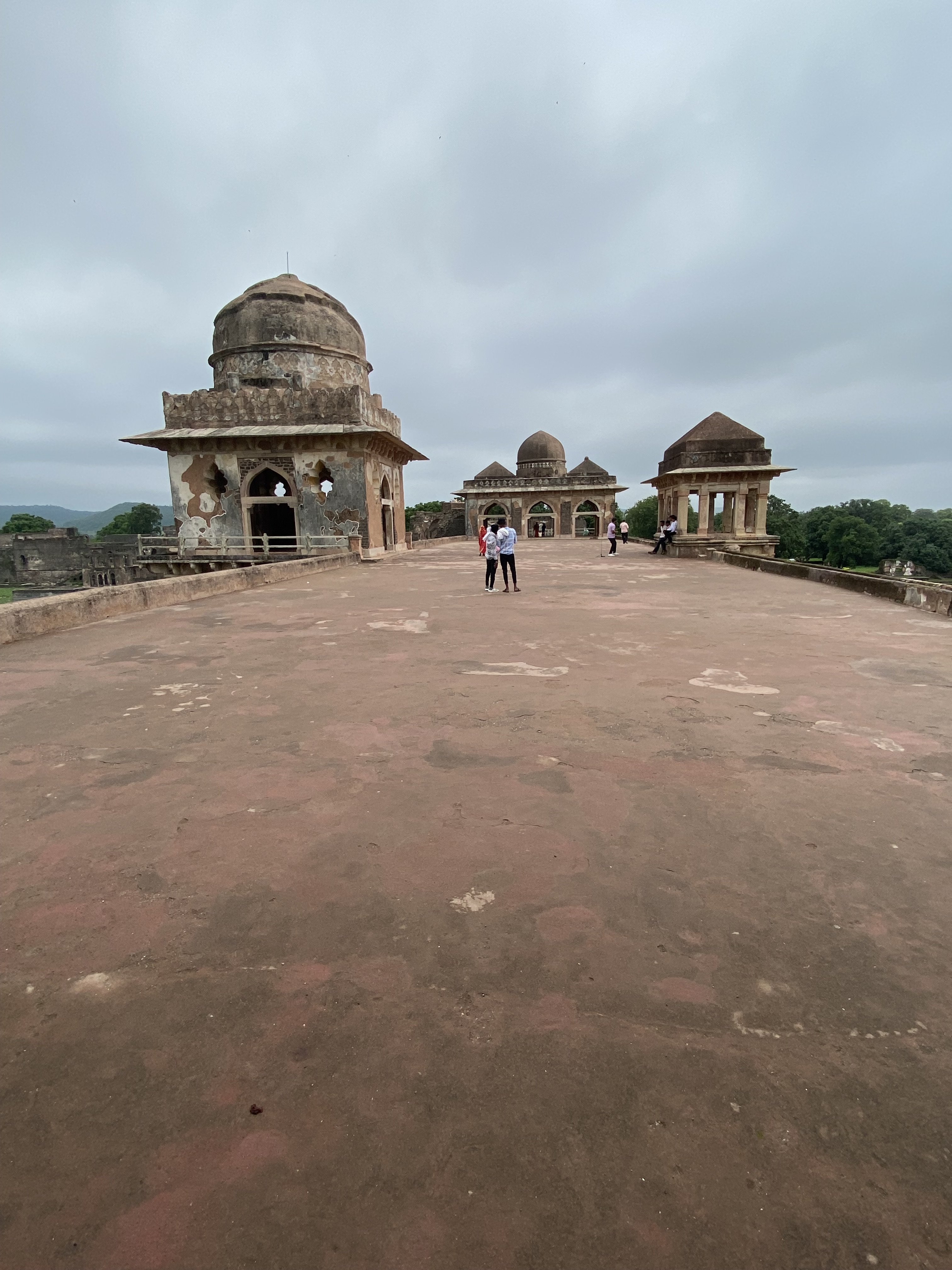
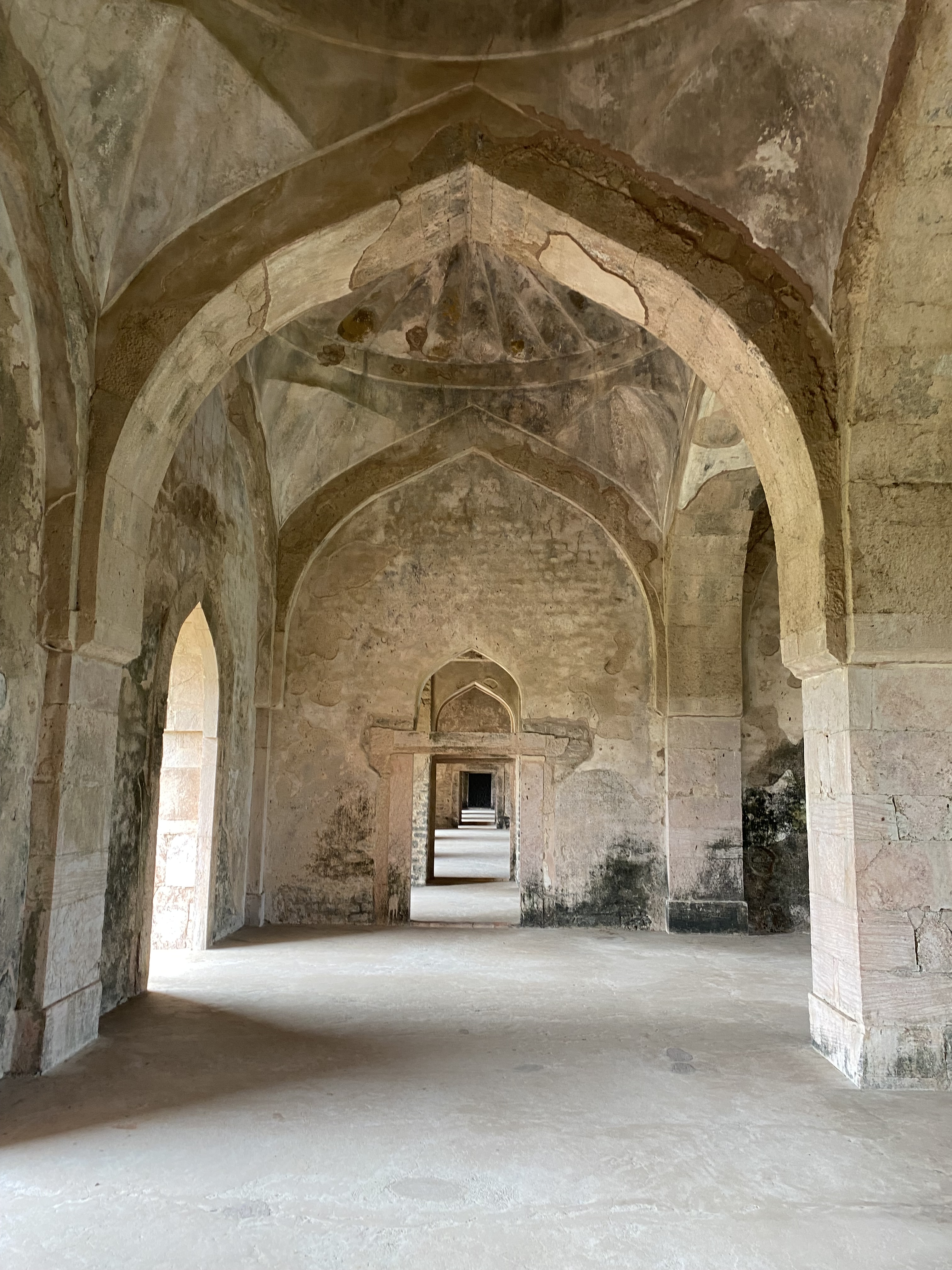
Stepping down from the Ship Palace, we could see a model of the same kept in the well-manicured lawns. Next stop was the Hindola Mahal or the Swinging Palace. This was used an assembly or meeting place and formed part of the palace complex. Said to have been built during Hoshang Shah’s regime, its peculiarity is in the manner in which its outer walls lean out at an odd angle, giving the impression of a building that would swing. Reasons for it is not well documented, possibly to allow free flow of air.
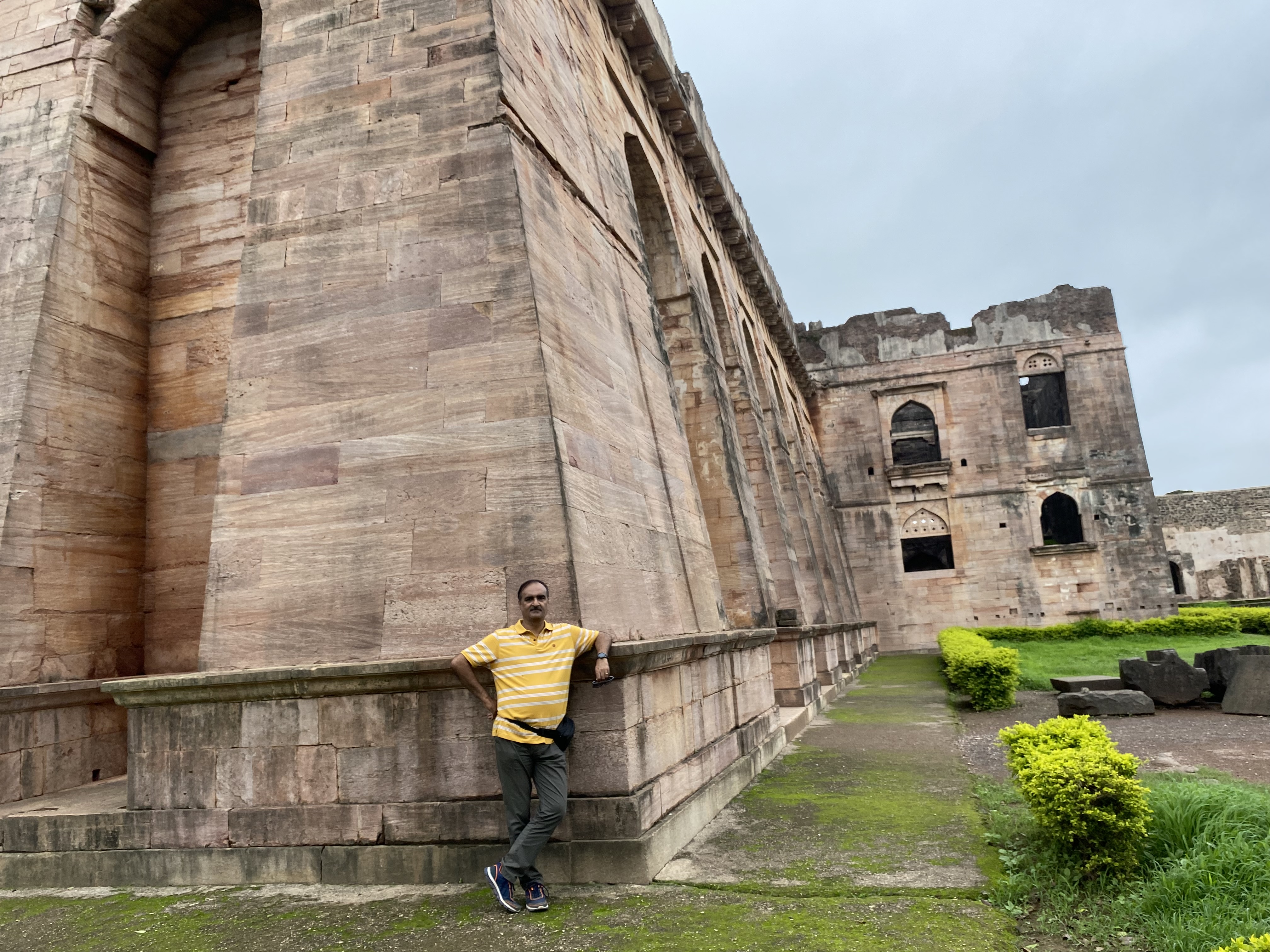
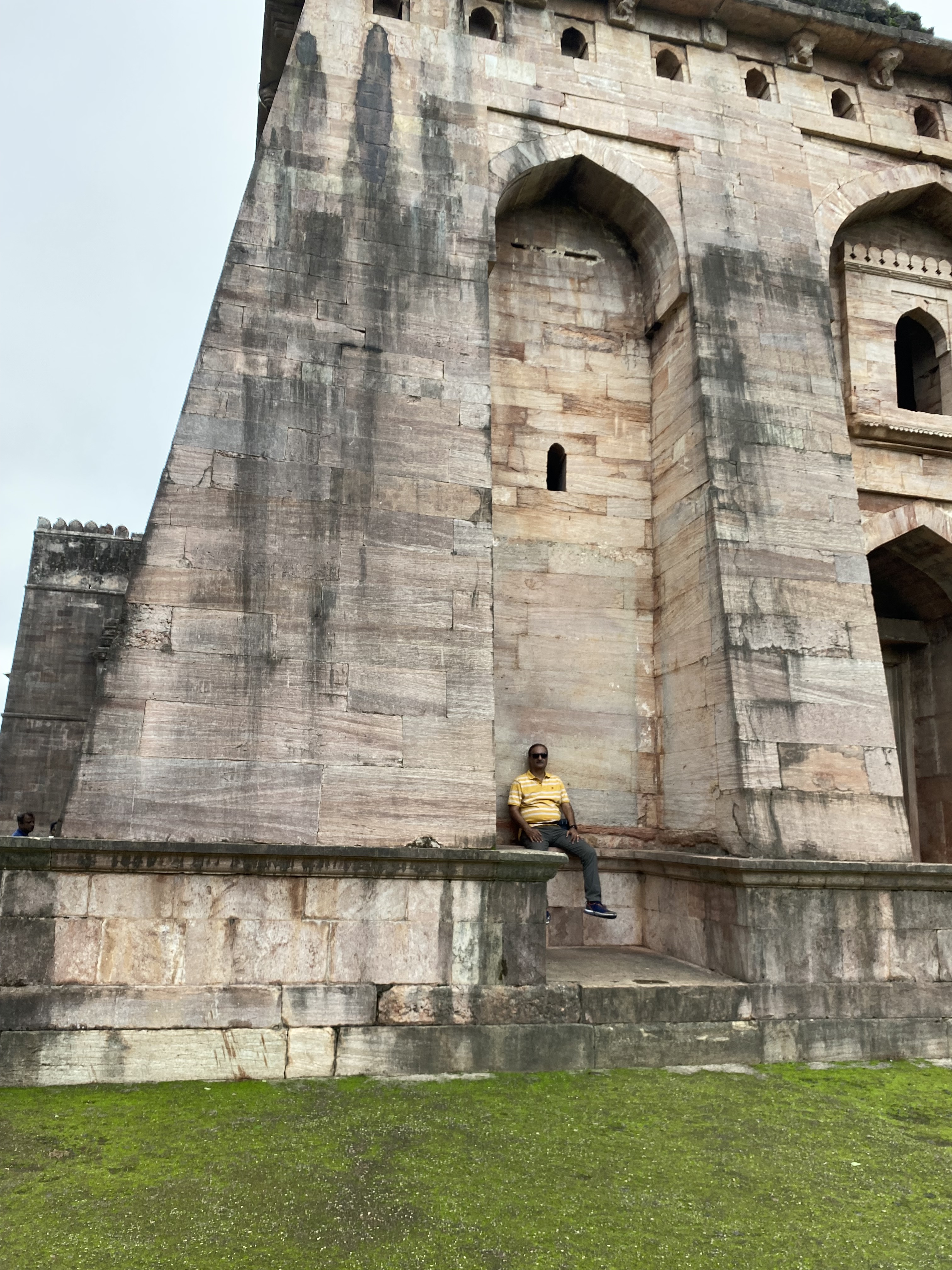
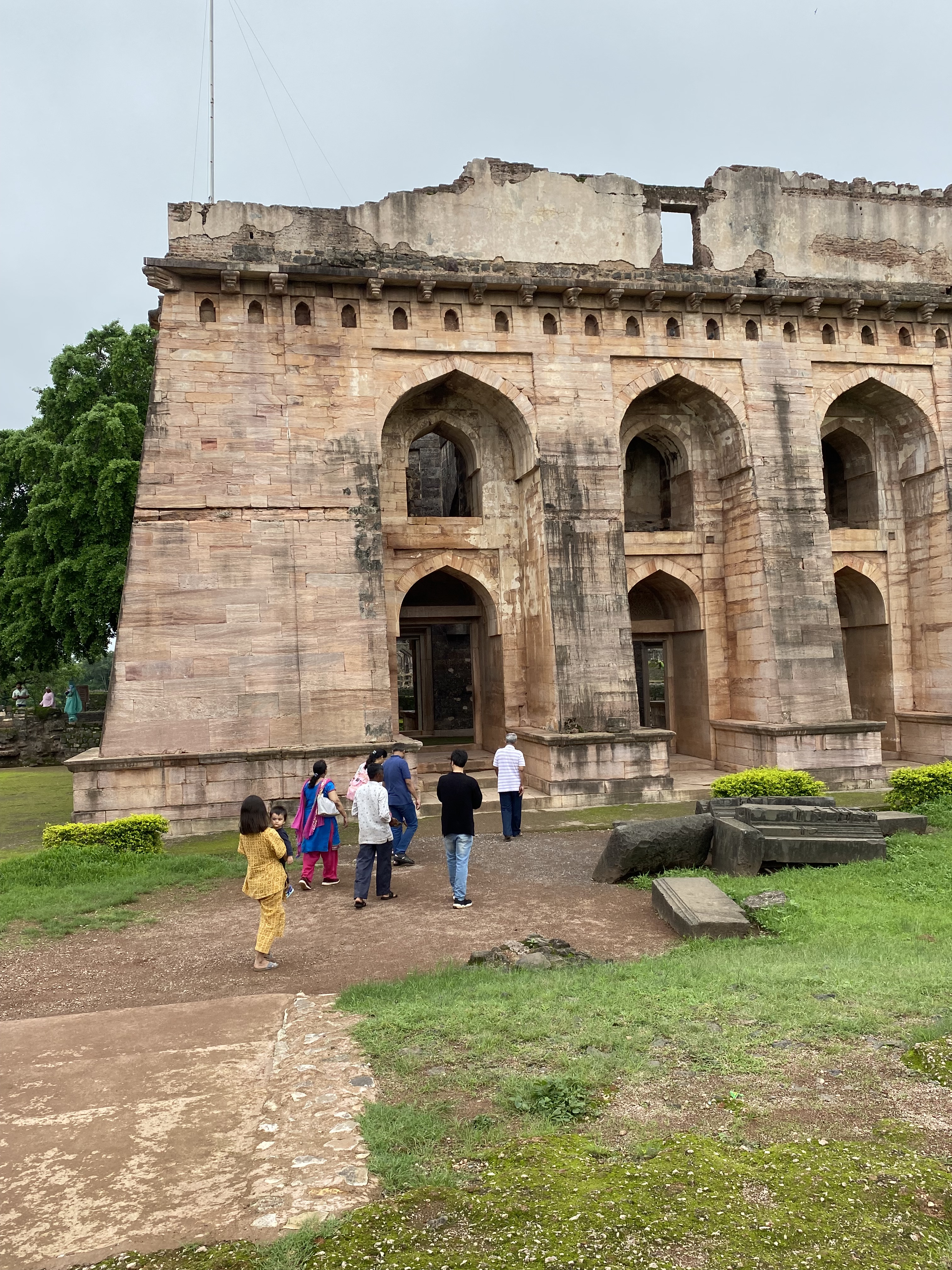

We were by now tired and decided to give Hoshang Shah’s Tomb a miss but went ahead to view Rewa Kund with its pavilion. Said to have been built by Baz Bahadur for Roopmati, it had water from the Narmada flowing in through aqueducts. It is said that on days when visibility was poor and the Narmada could not be viewed from the Roopmati Pavilion, the queen would instead look at the water in Rewa Kund. Not too well maintained now.
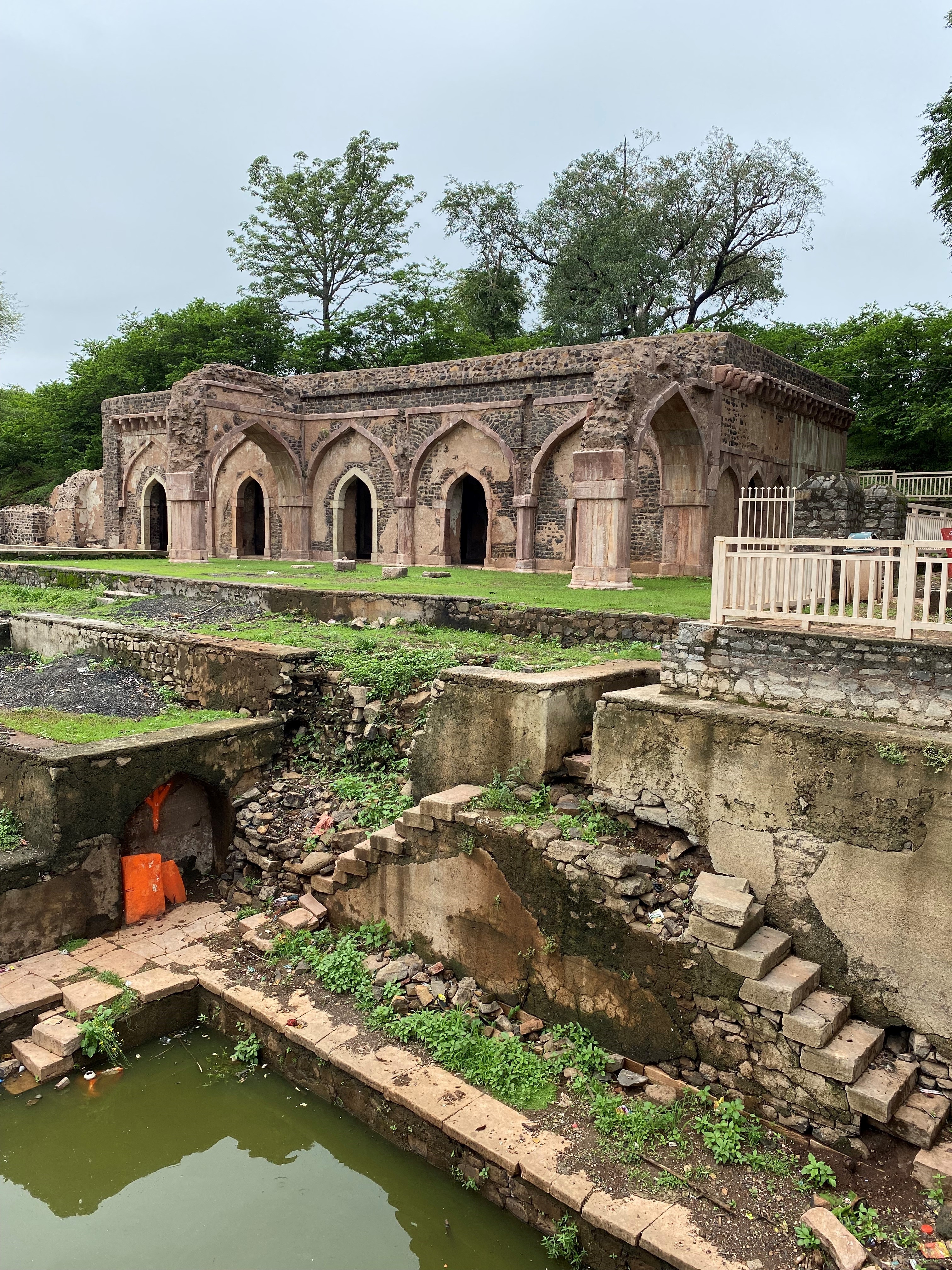
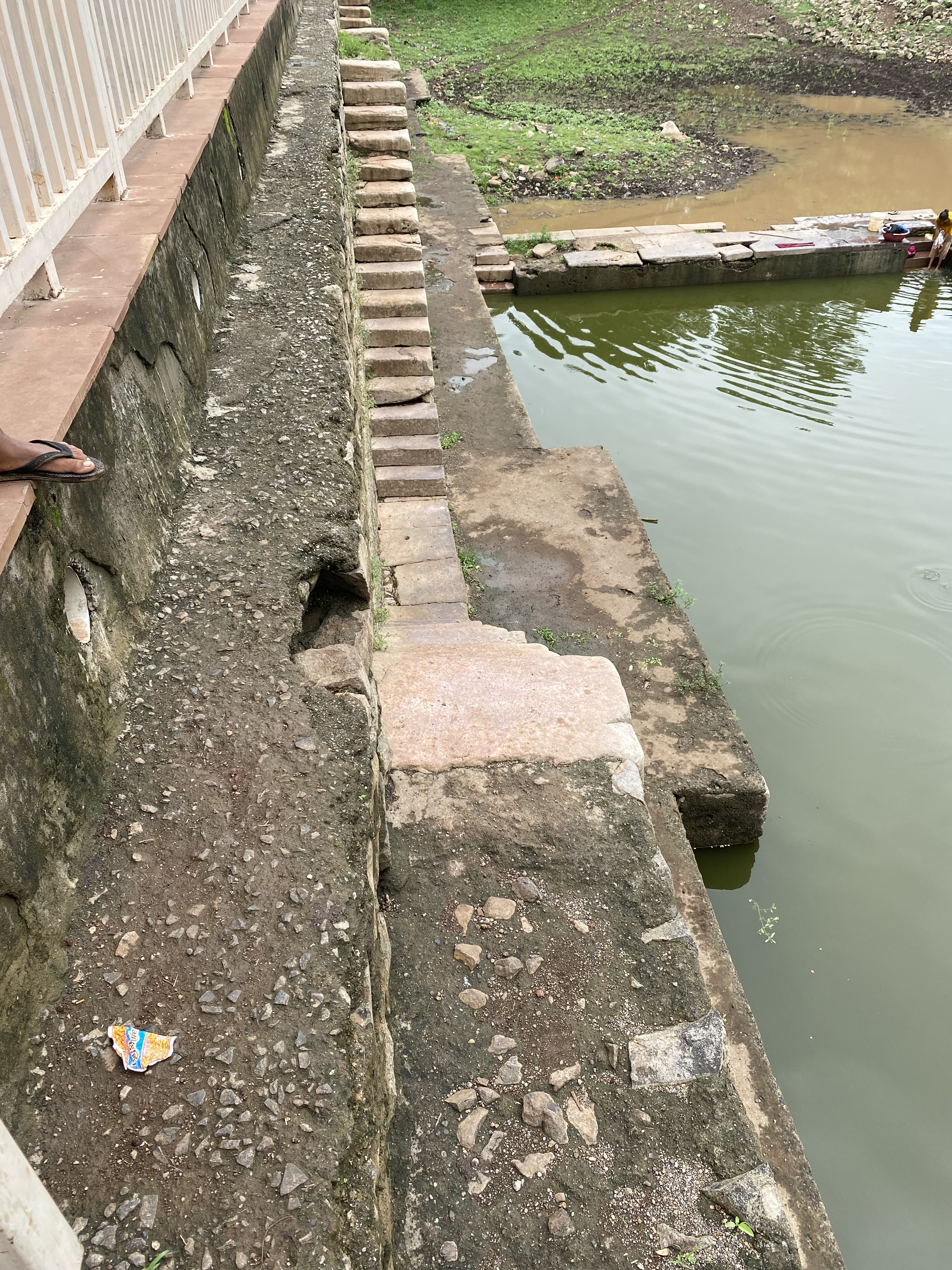
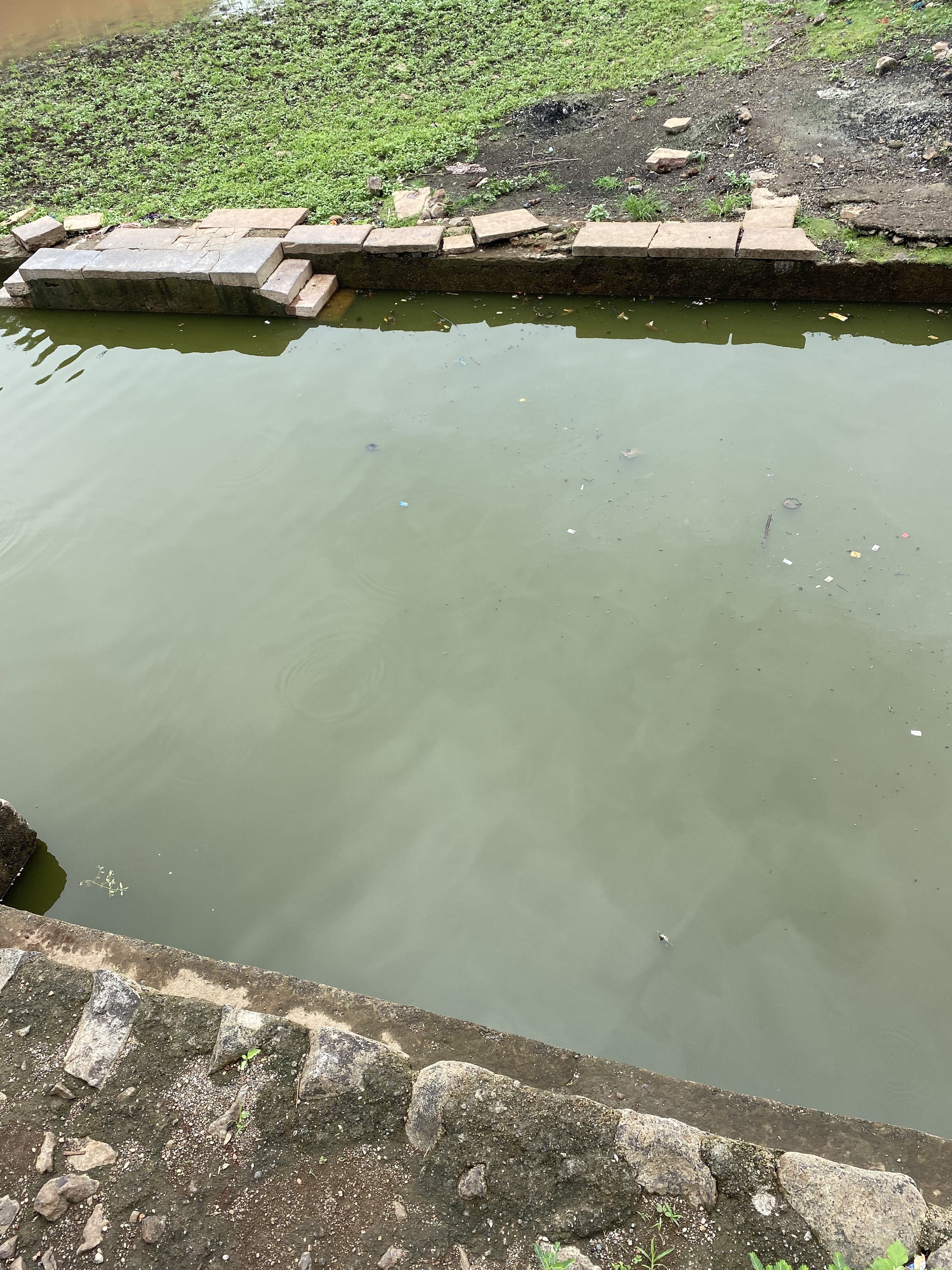
Sad to see a woman washing clothes in Rewa Kund of today. A monument left unattended and unguarded. Anyways, a wonderful trip to Madhya Pradesh. Mandav and Maheshwar are really two hidden gems of this state and both stand testimony to two famous women.
Discover more from BalasBroadcast
Subscribe to get the latest posts sent to your email.